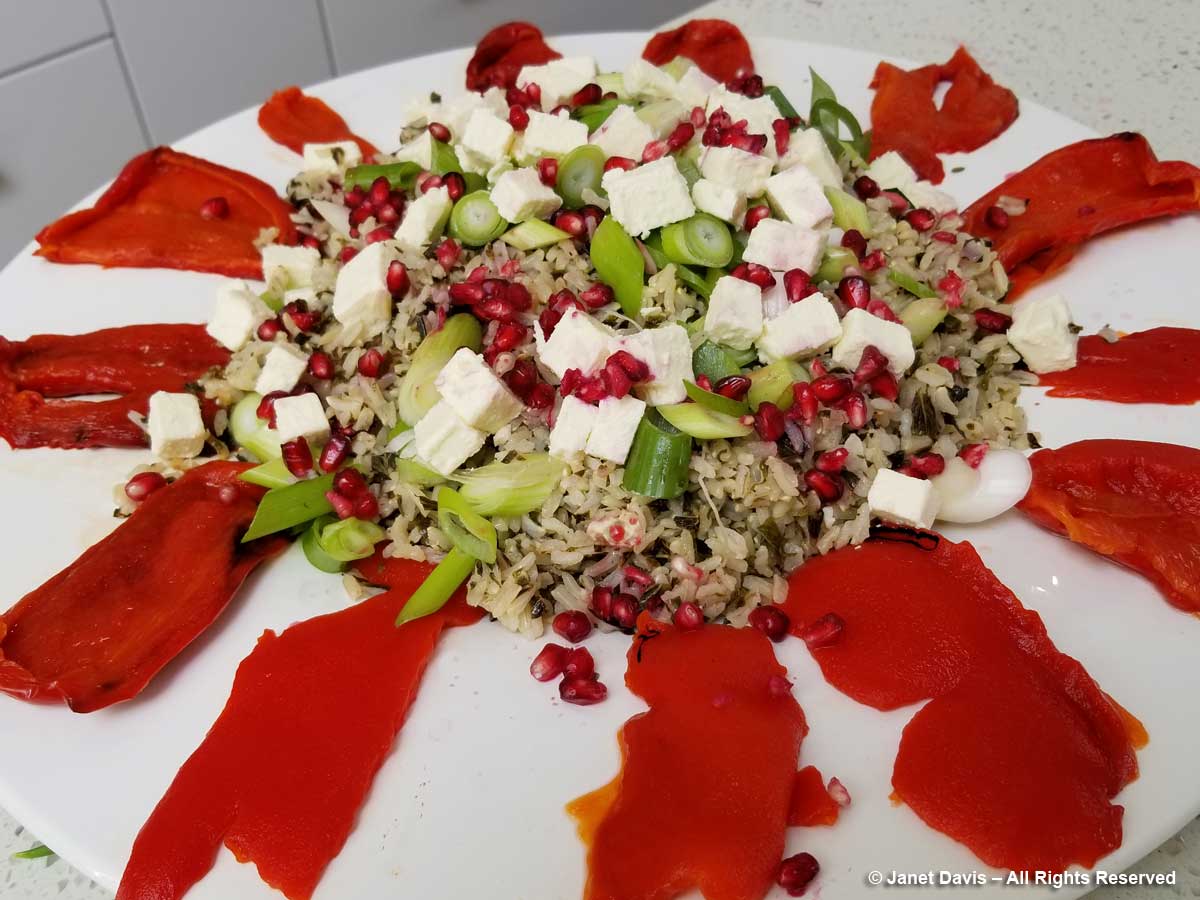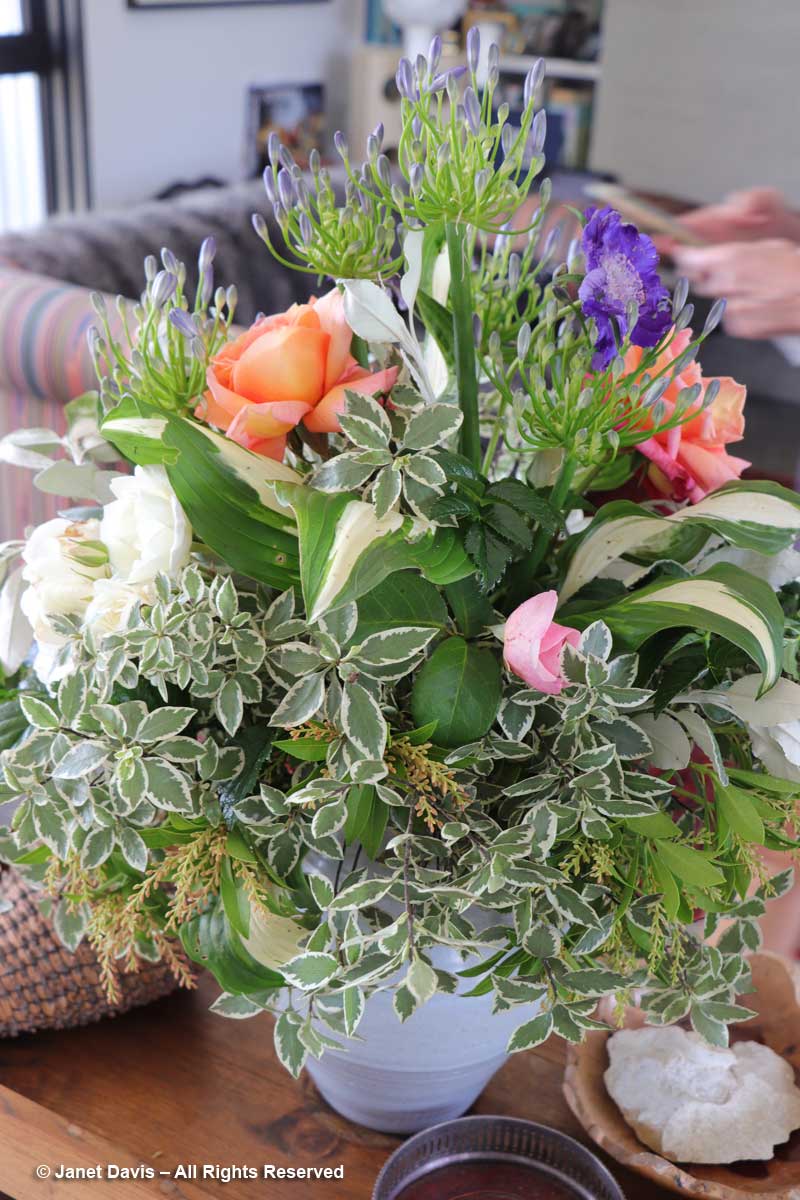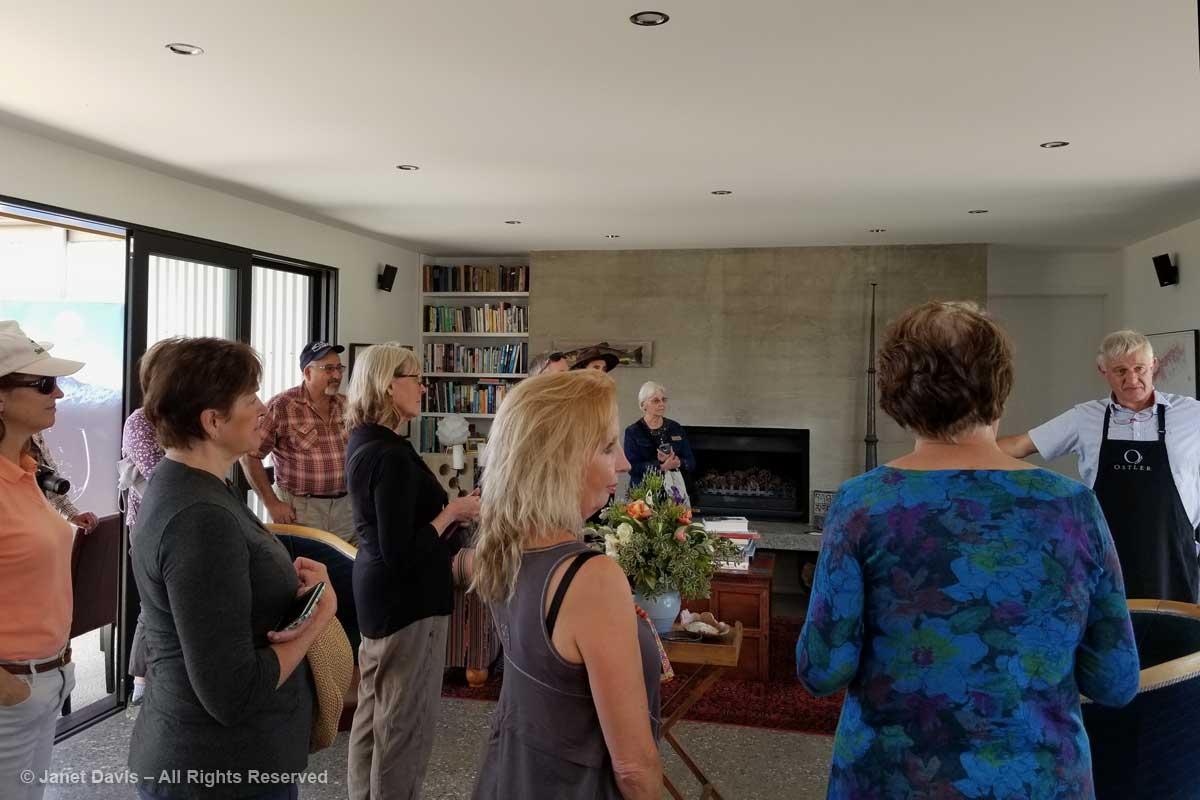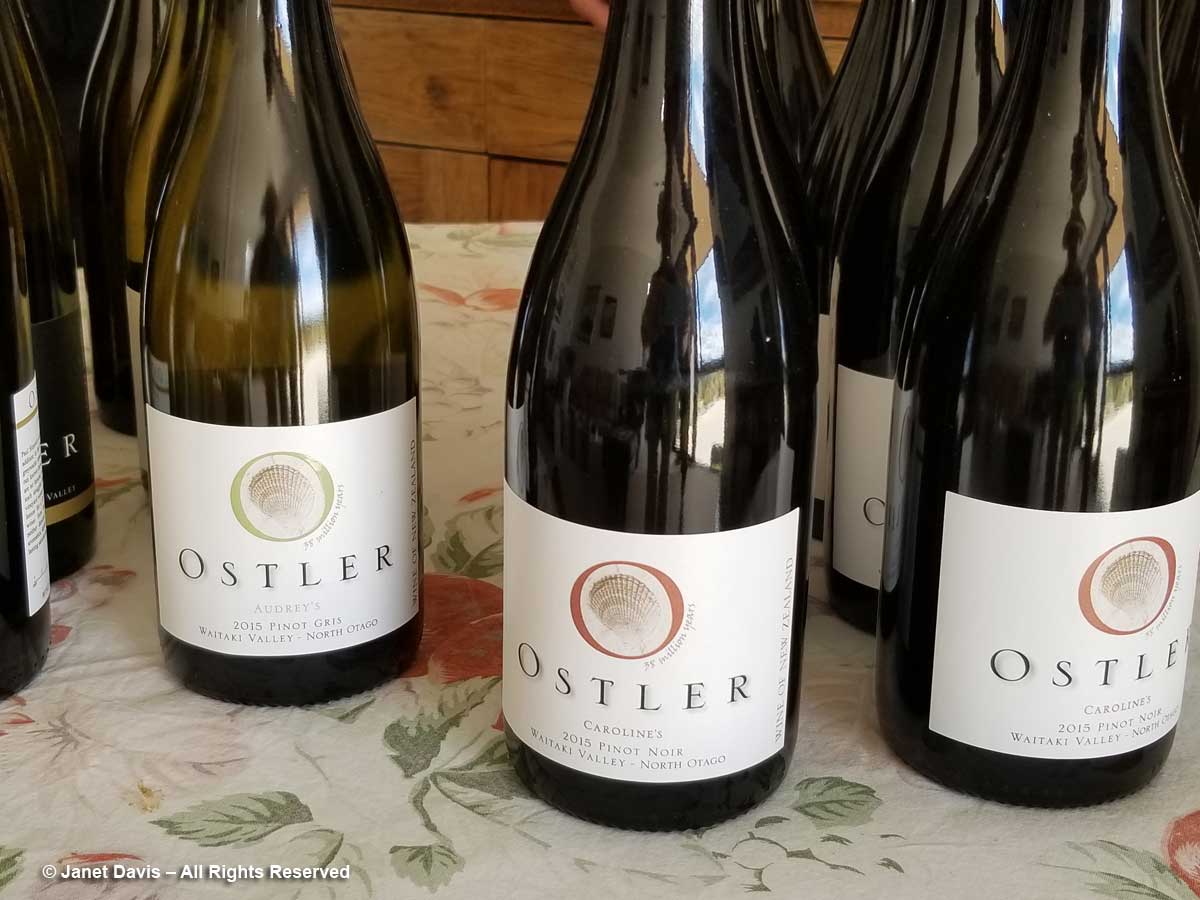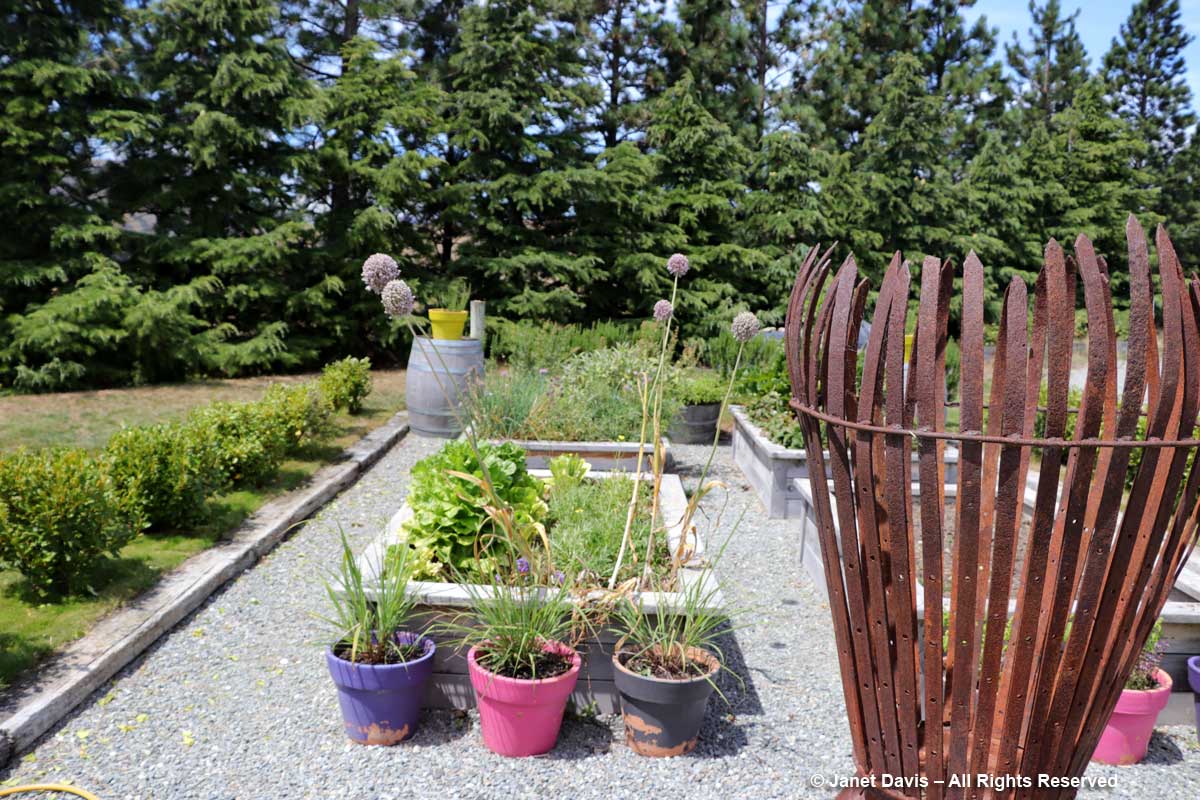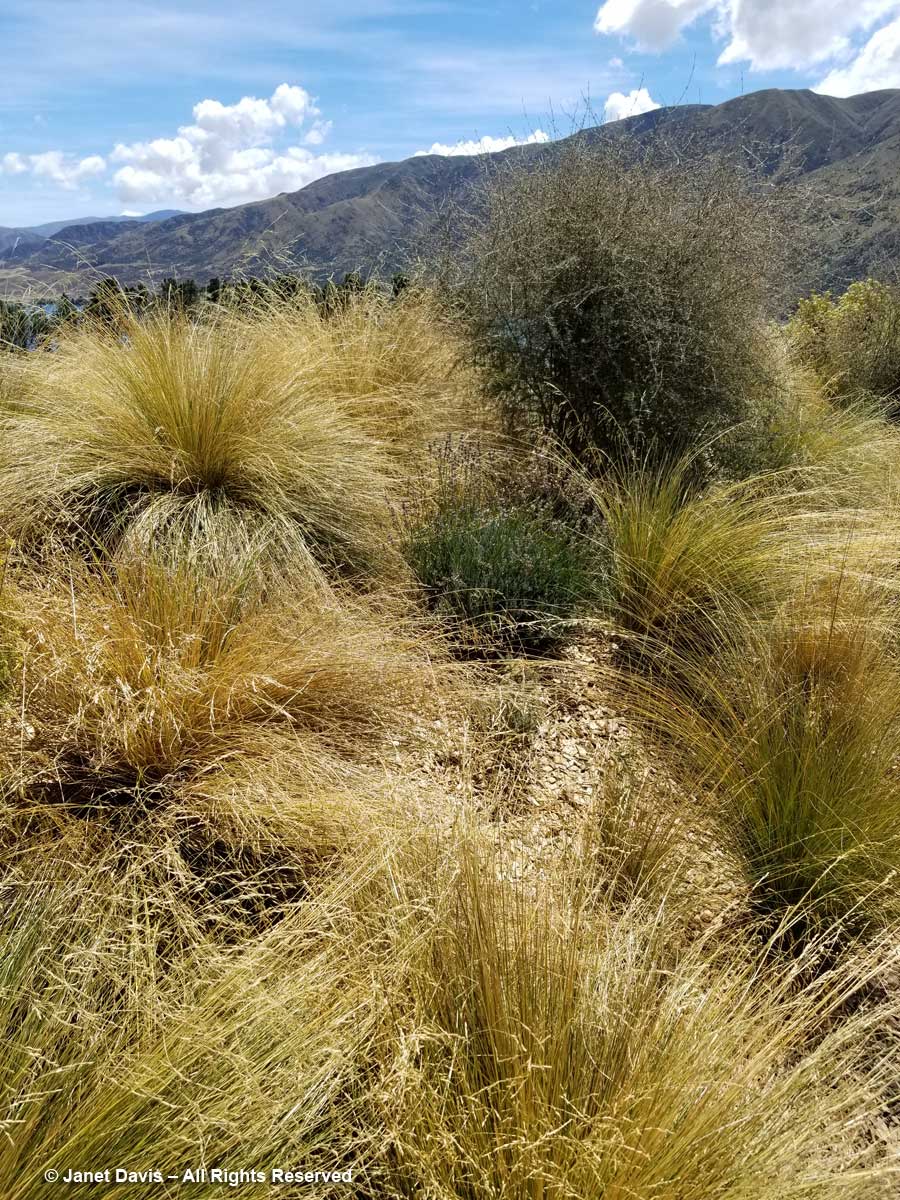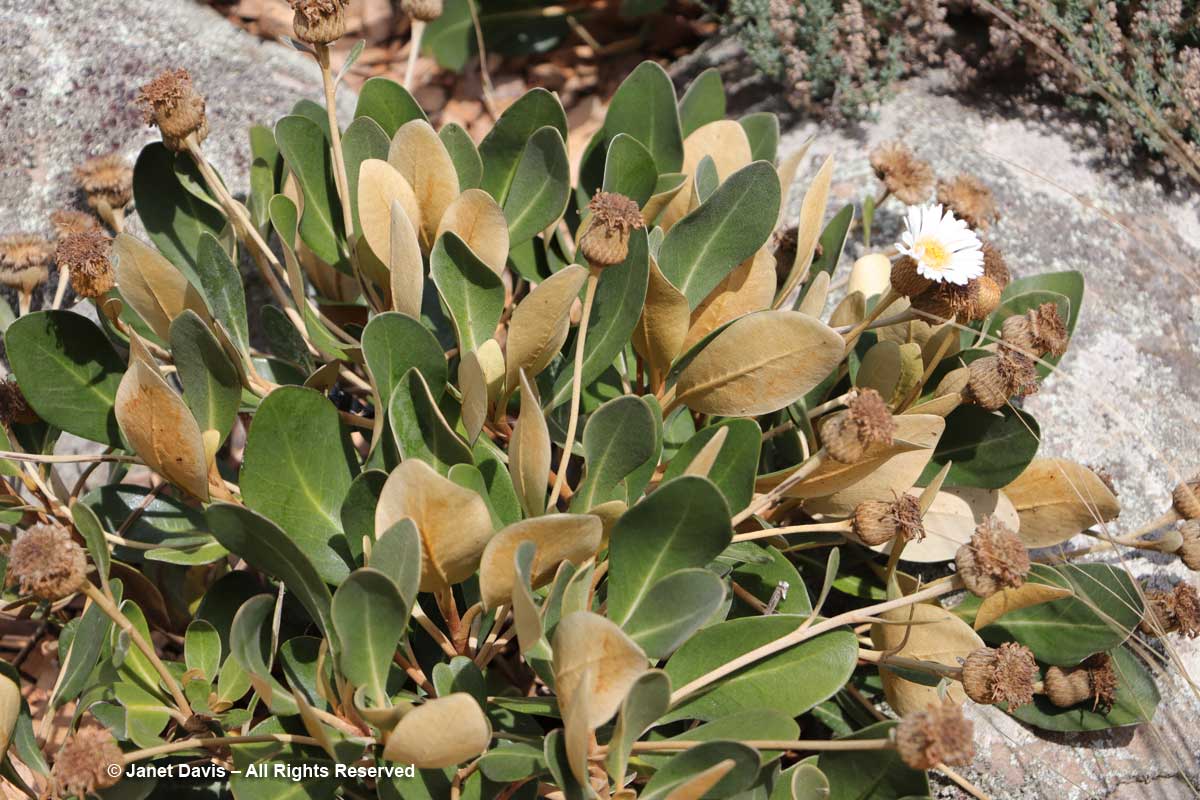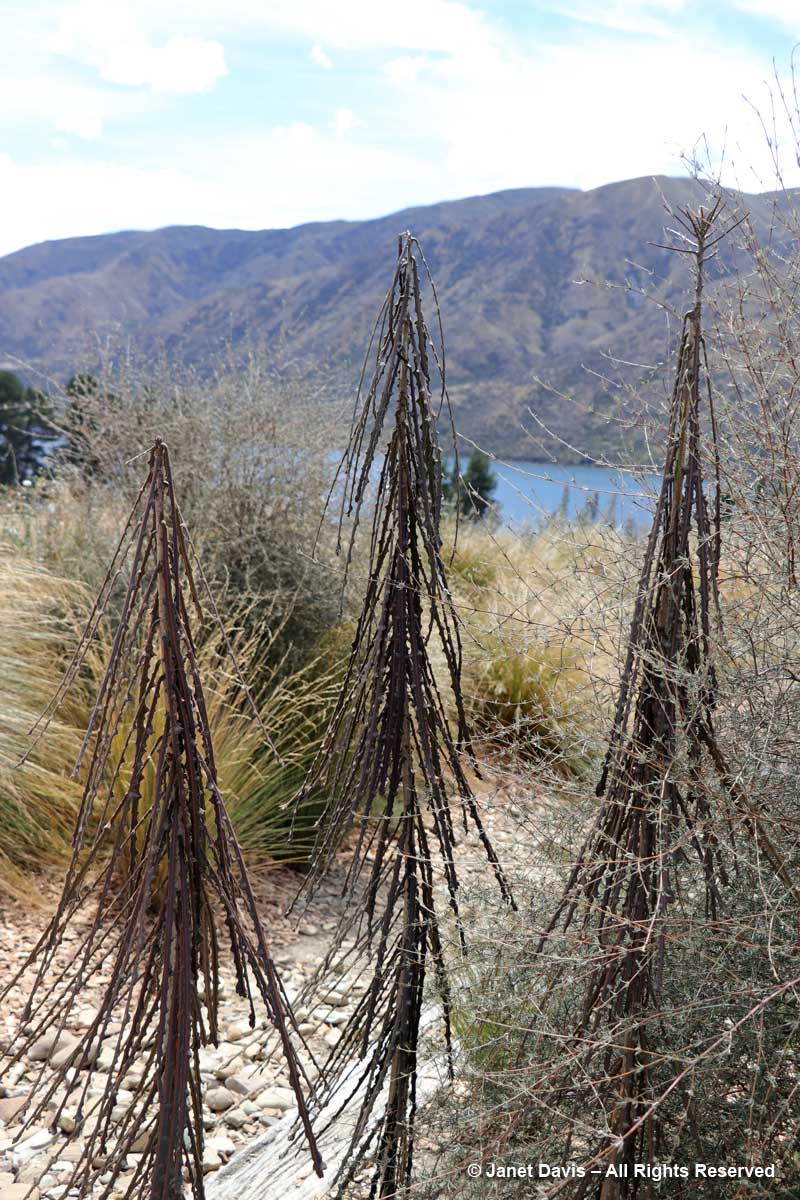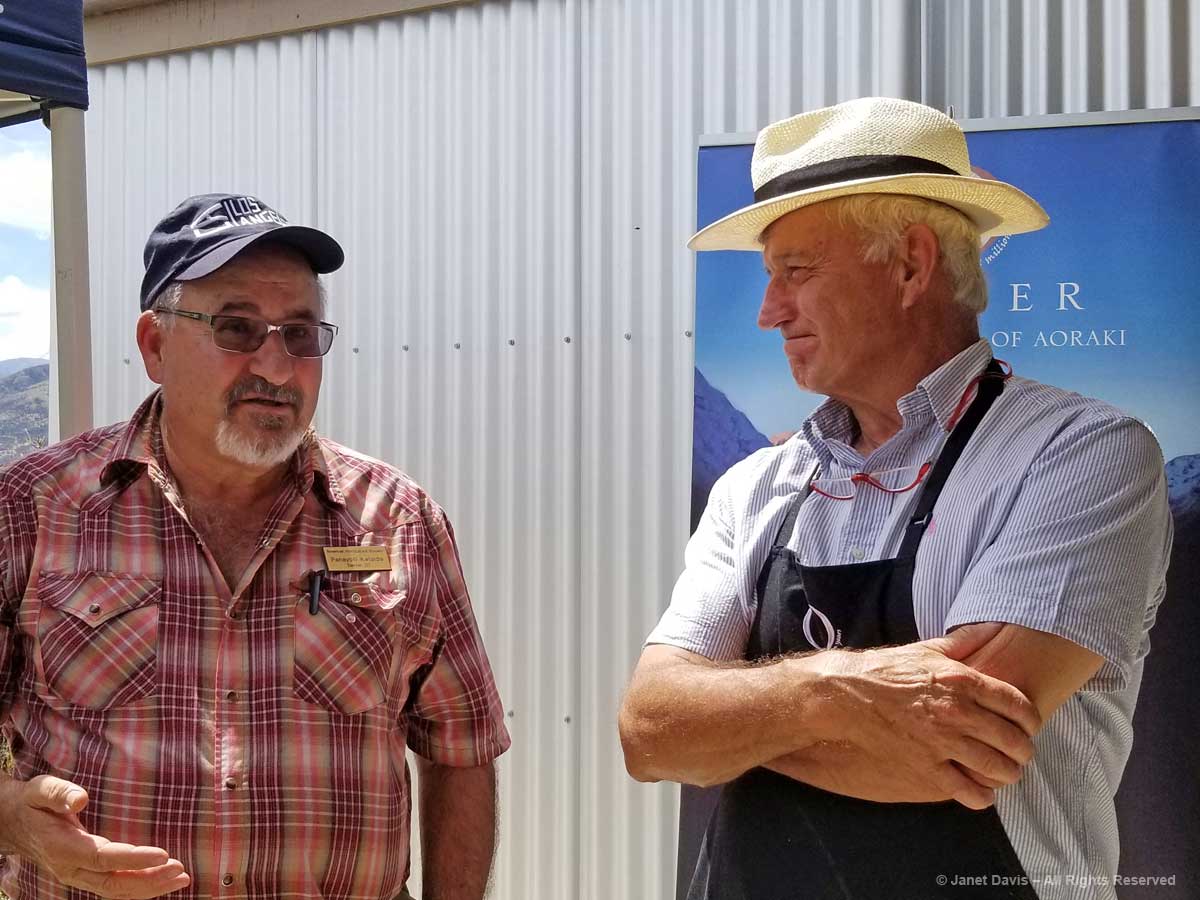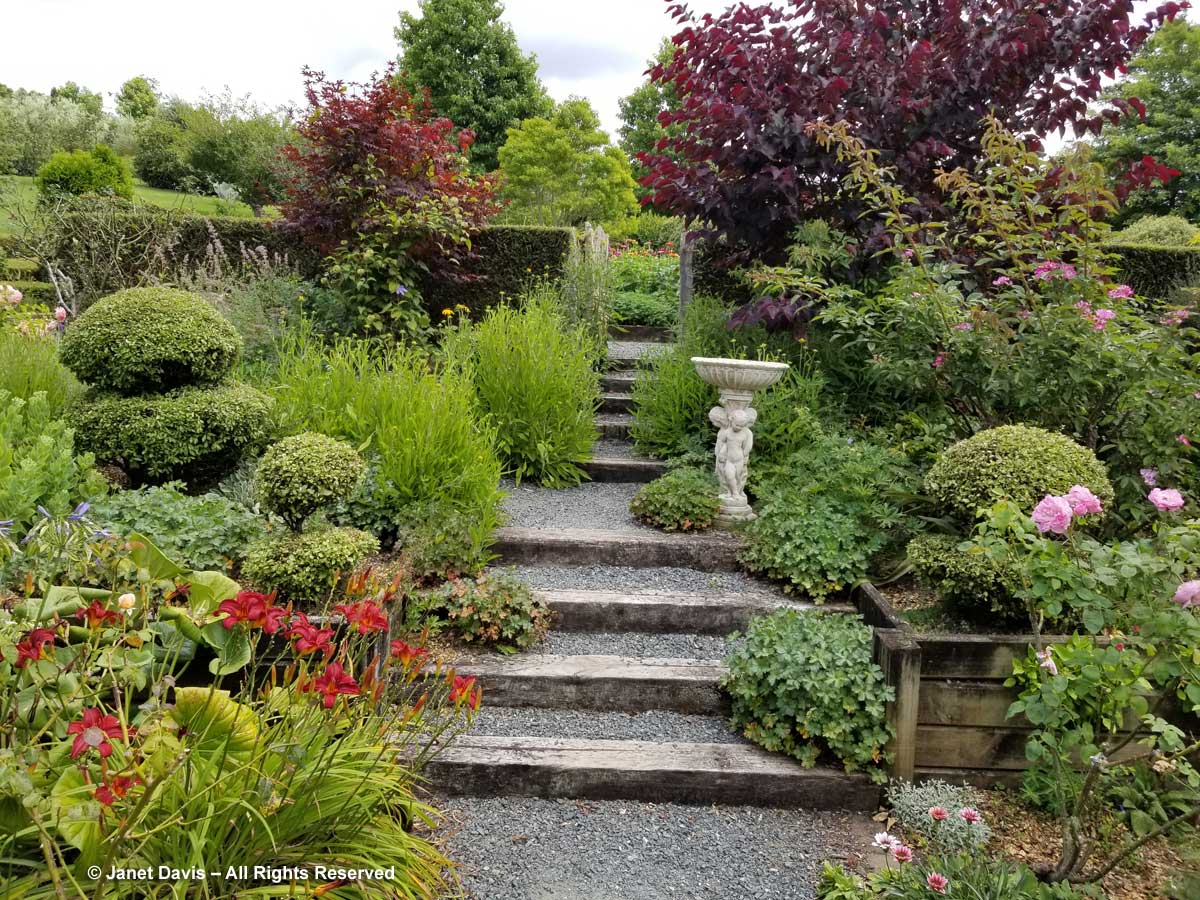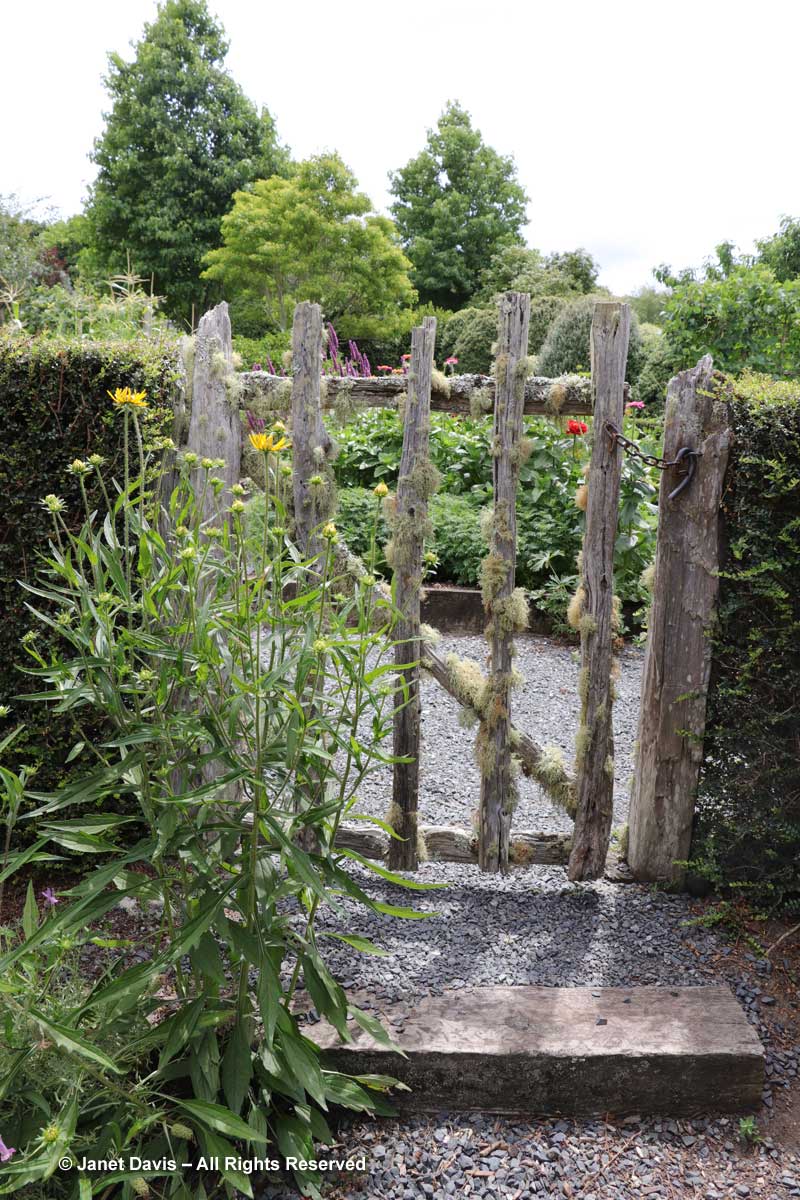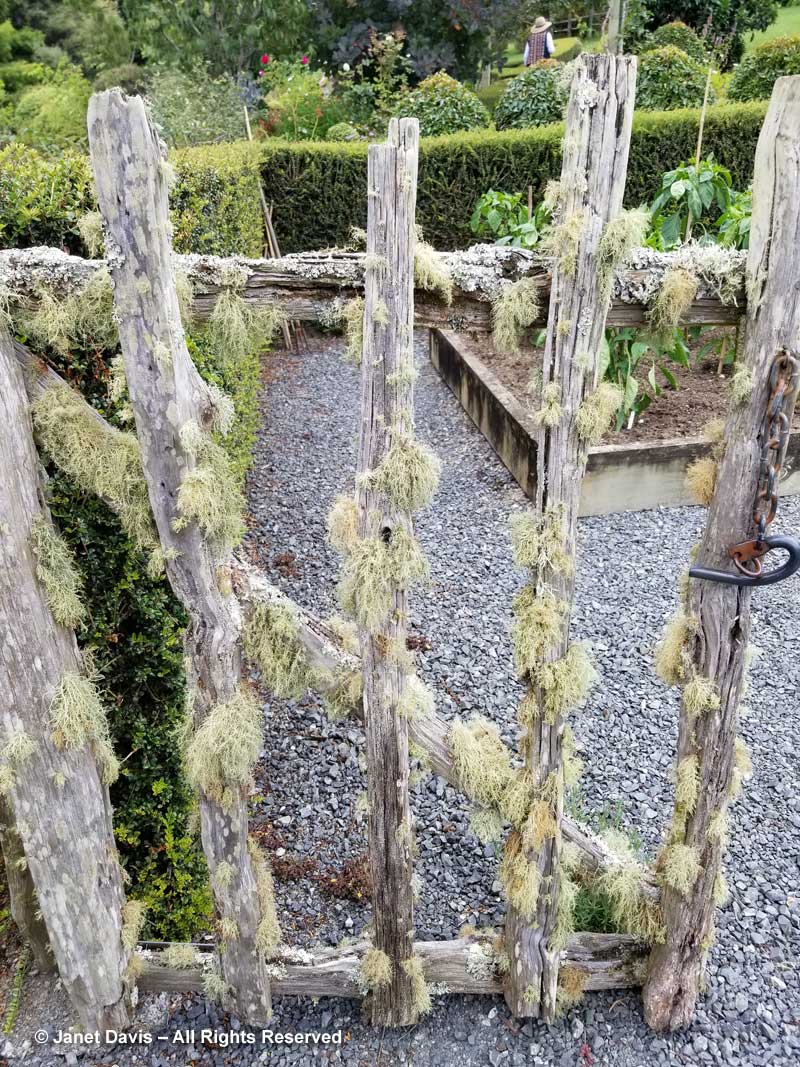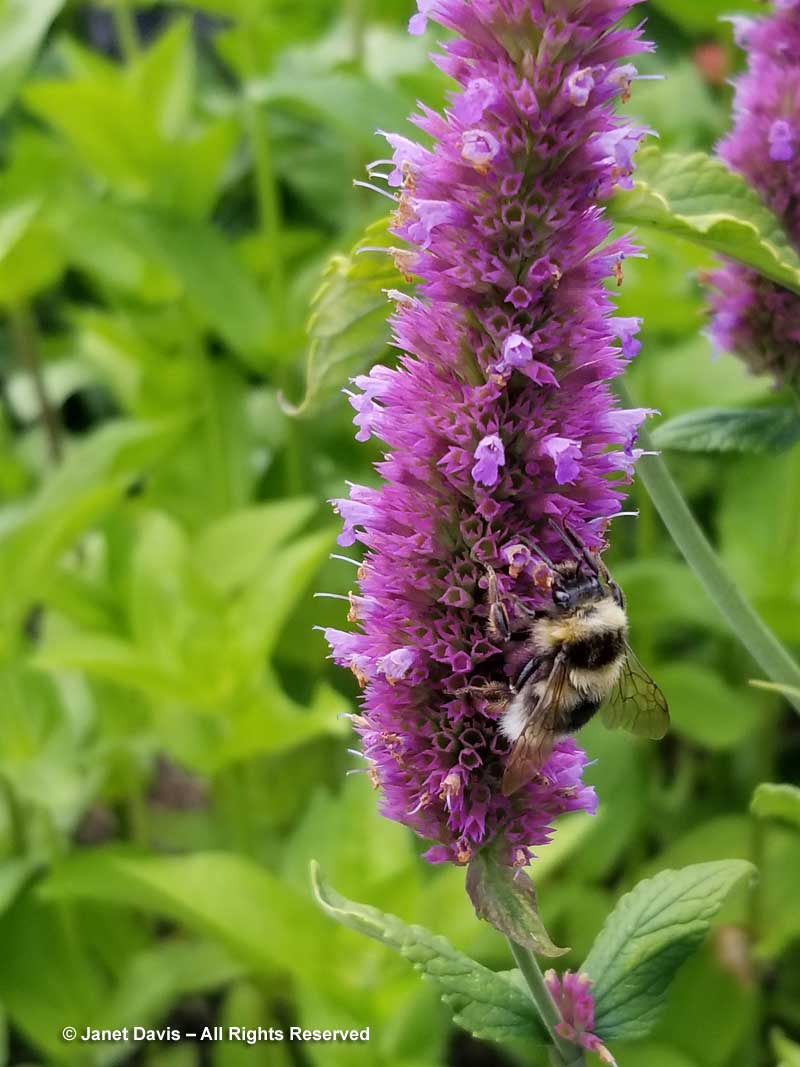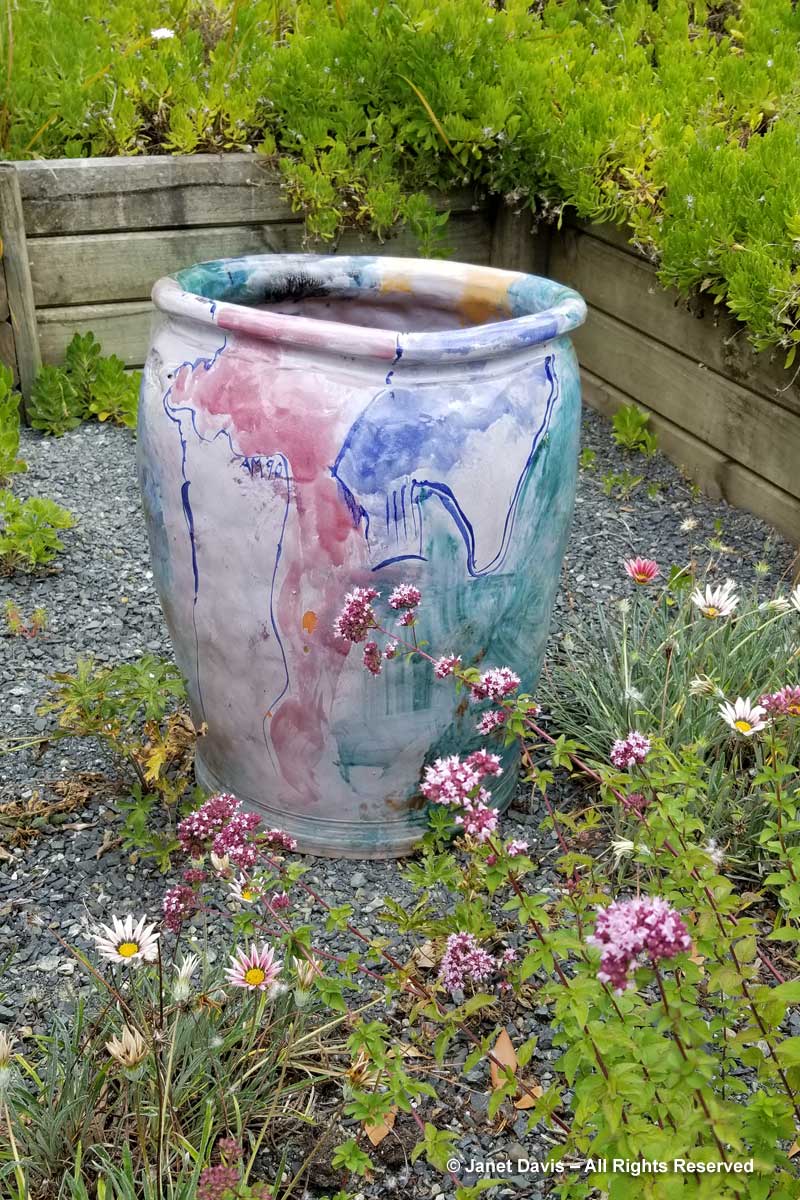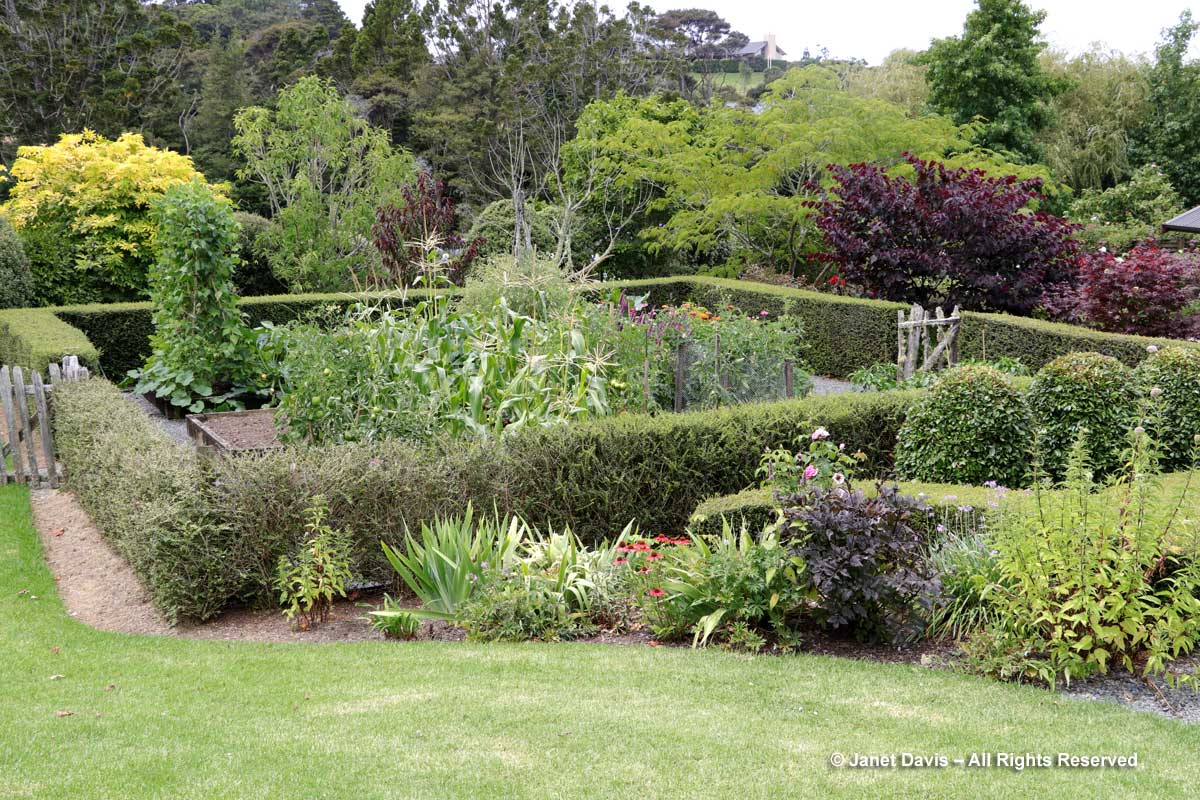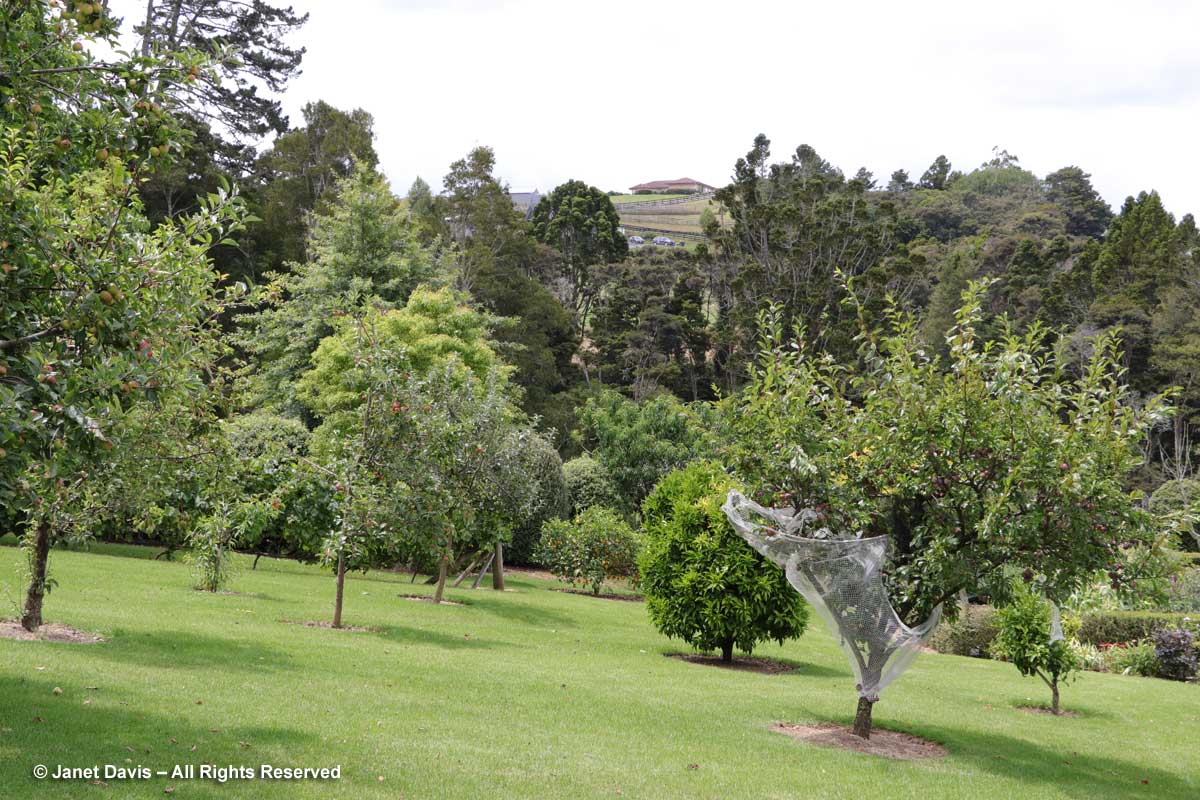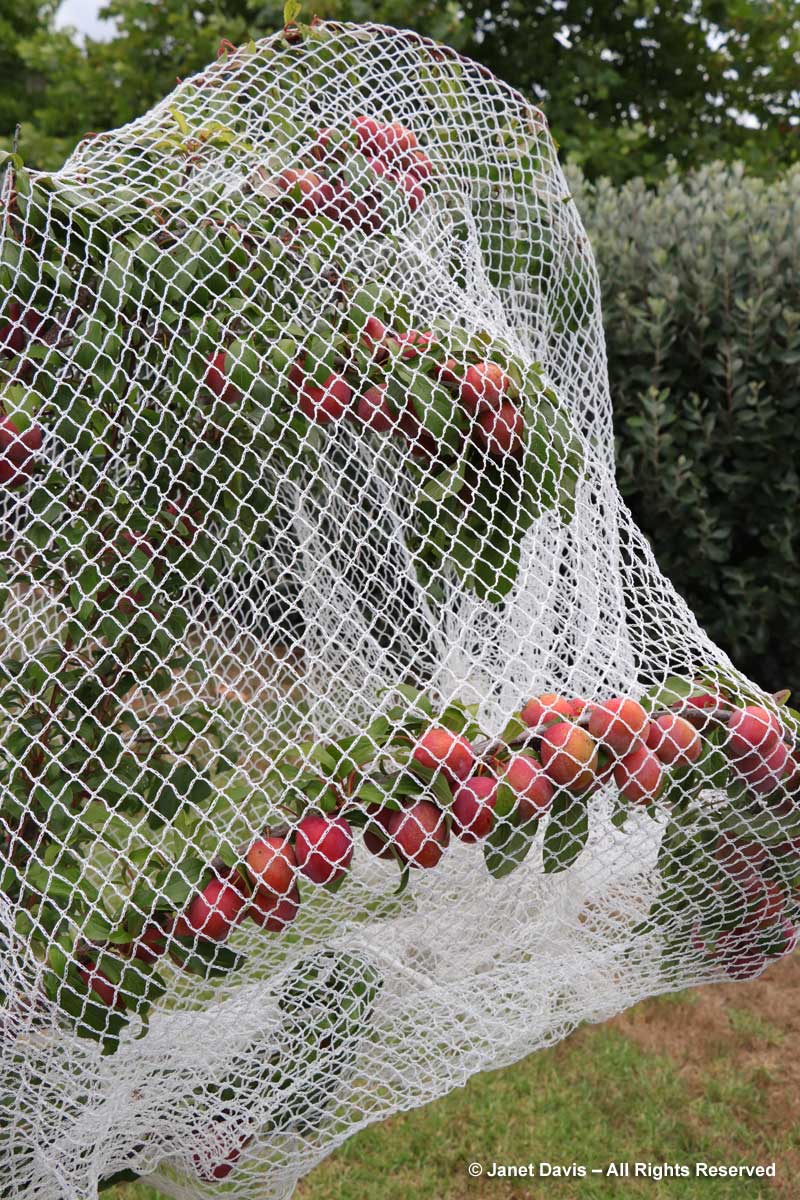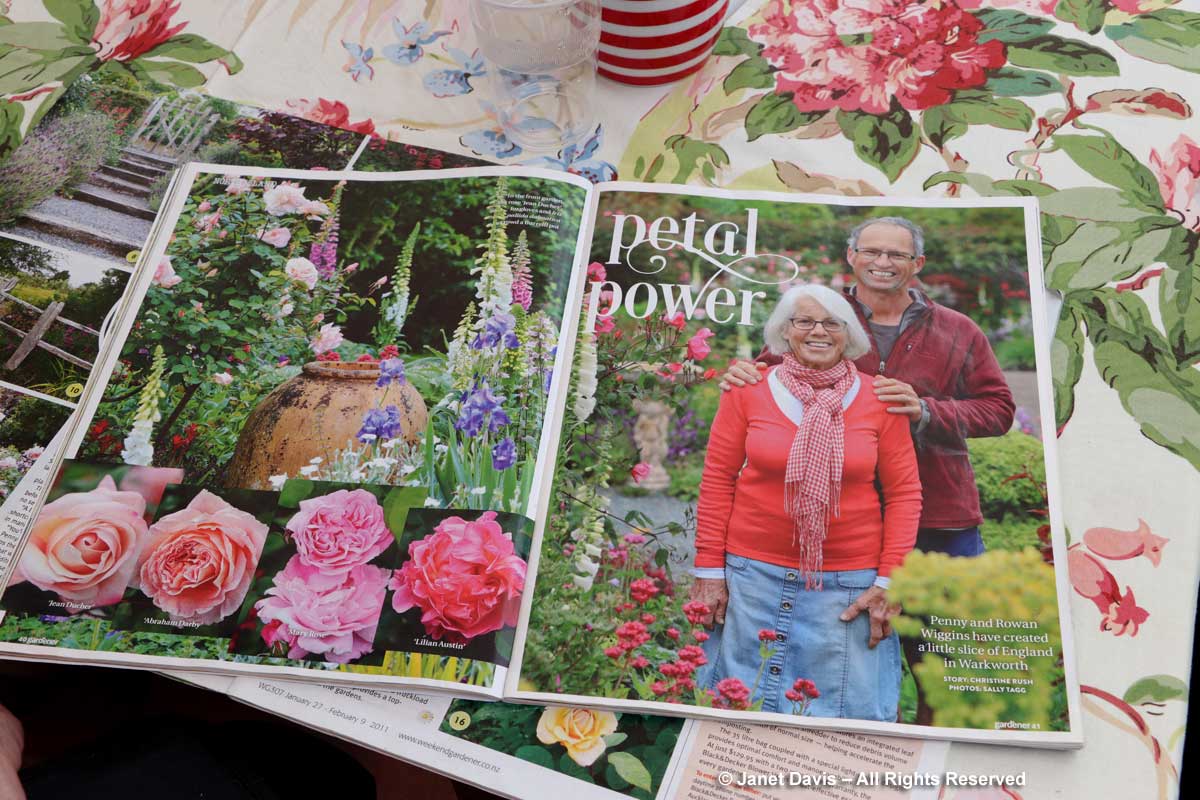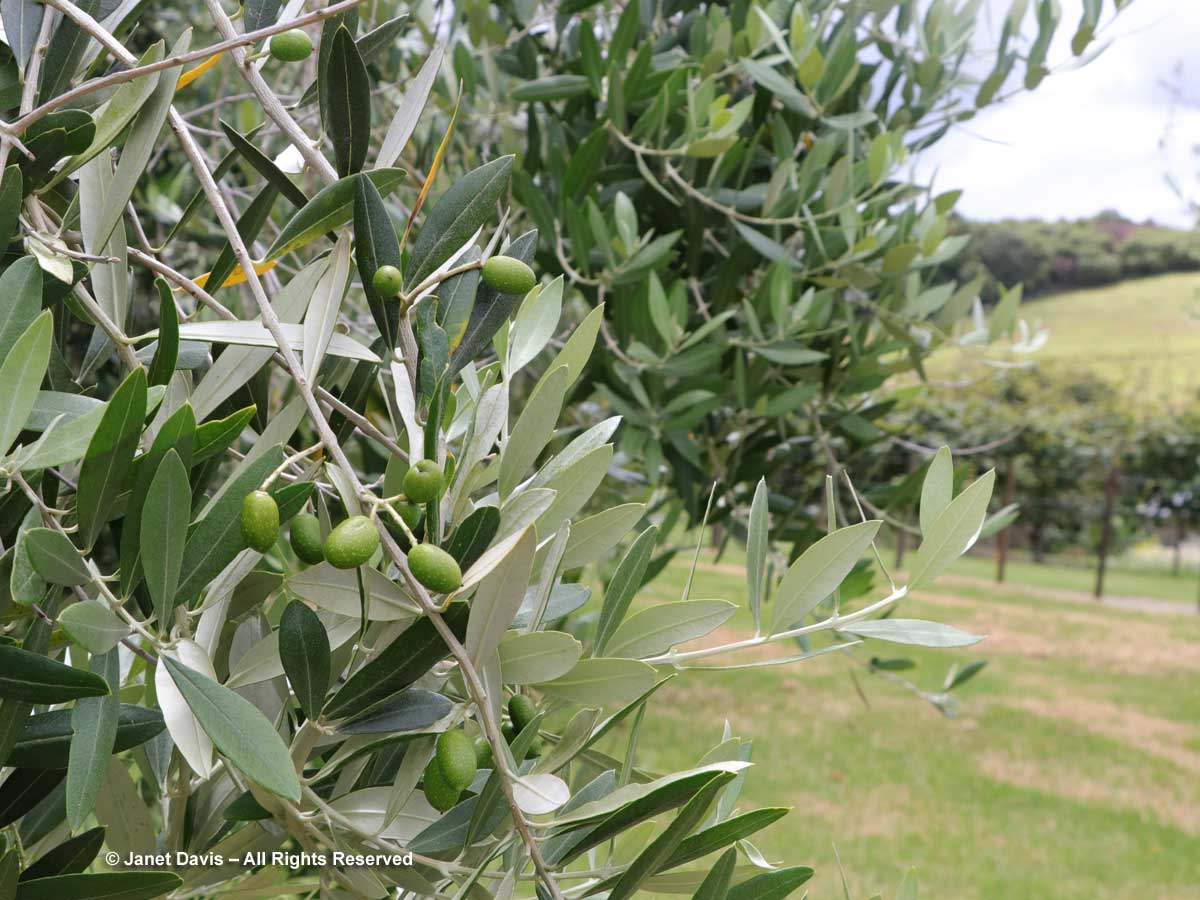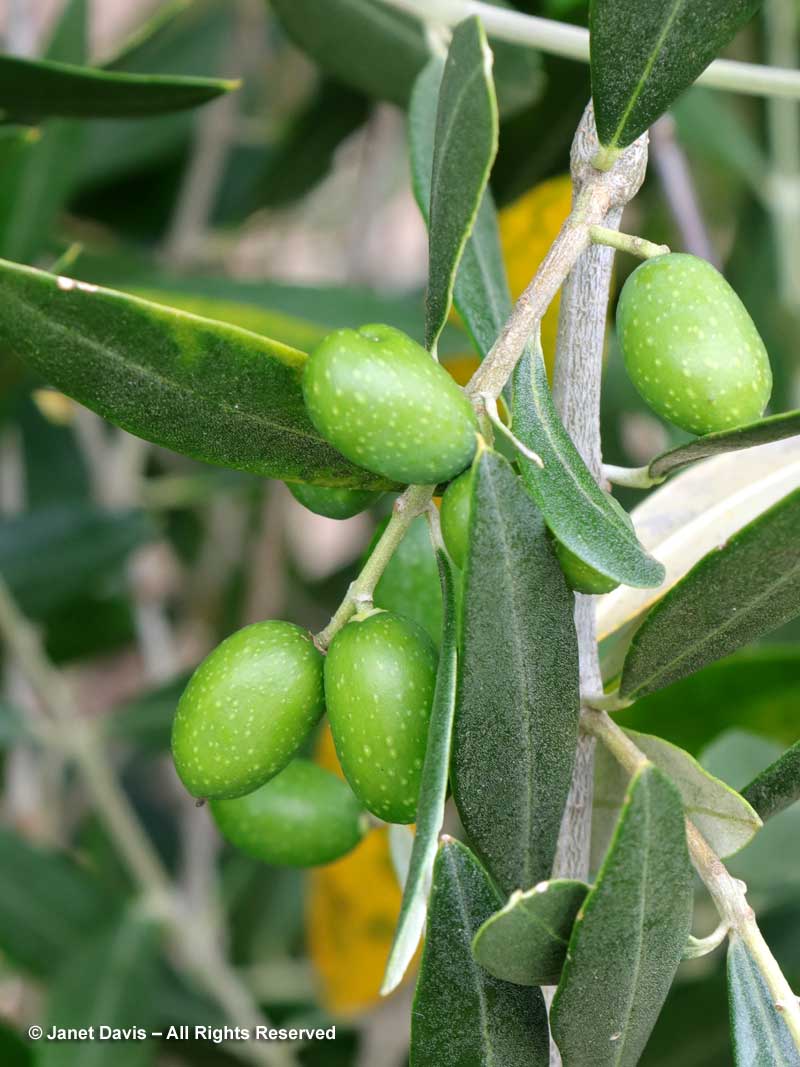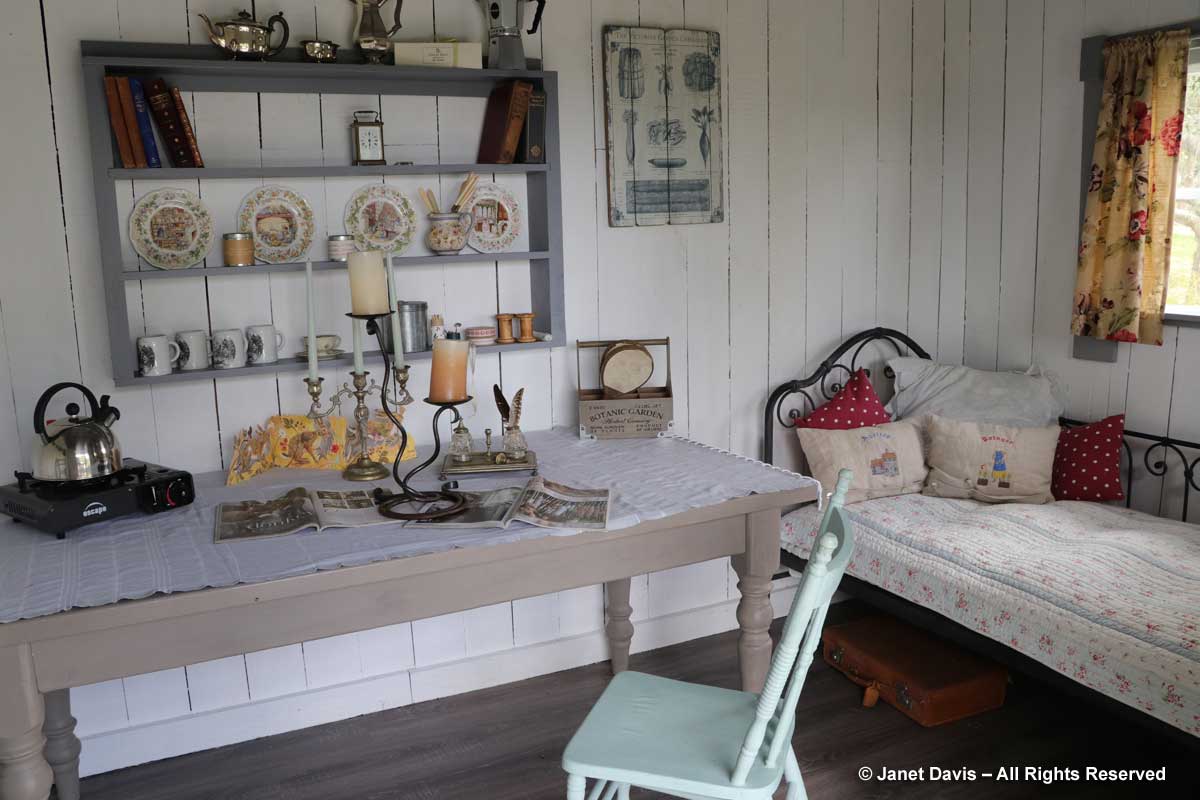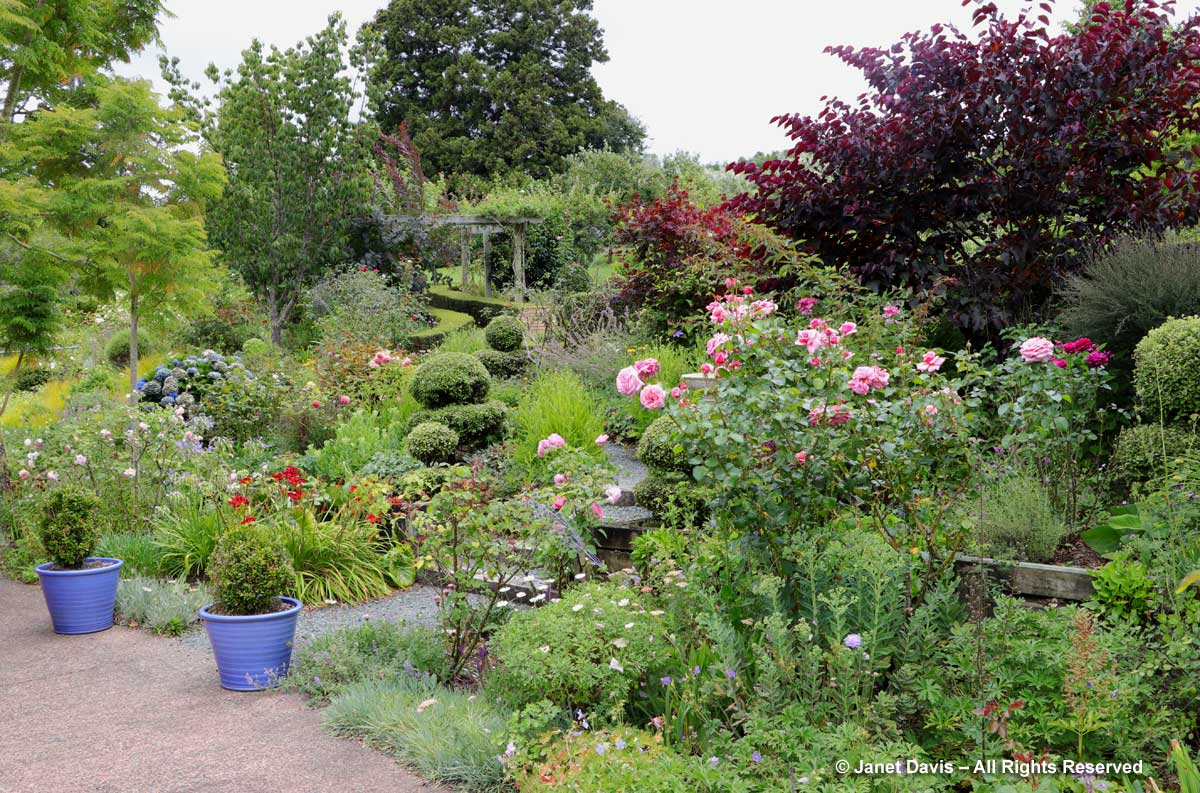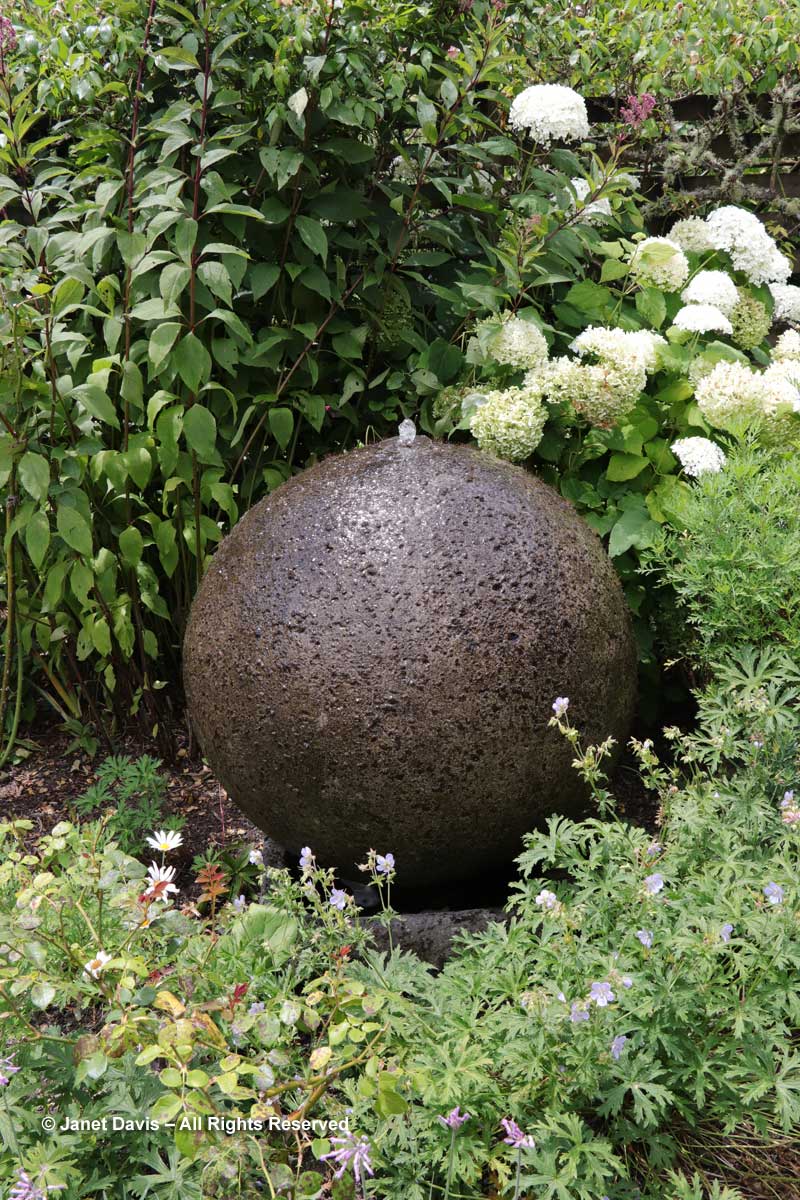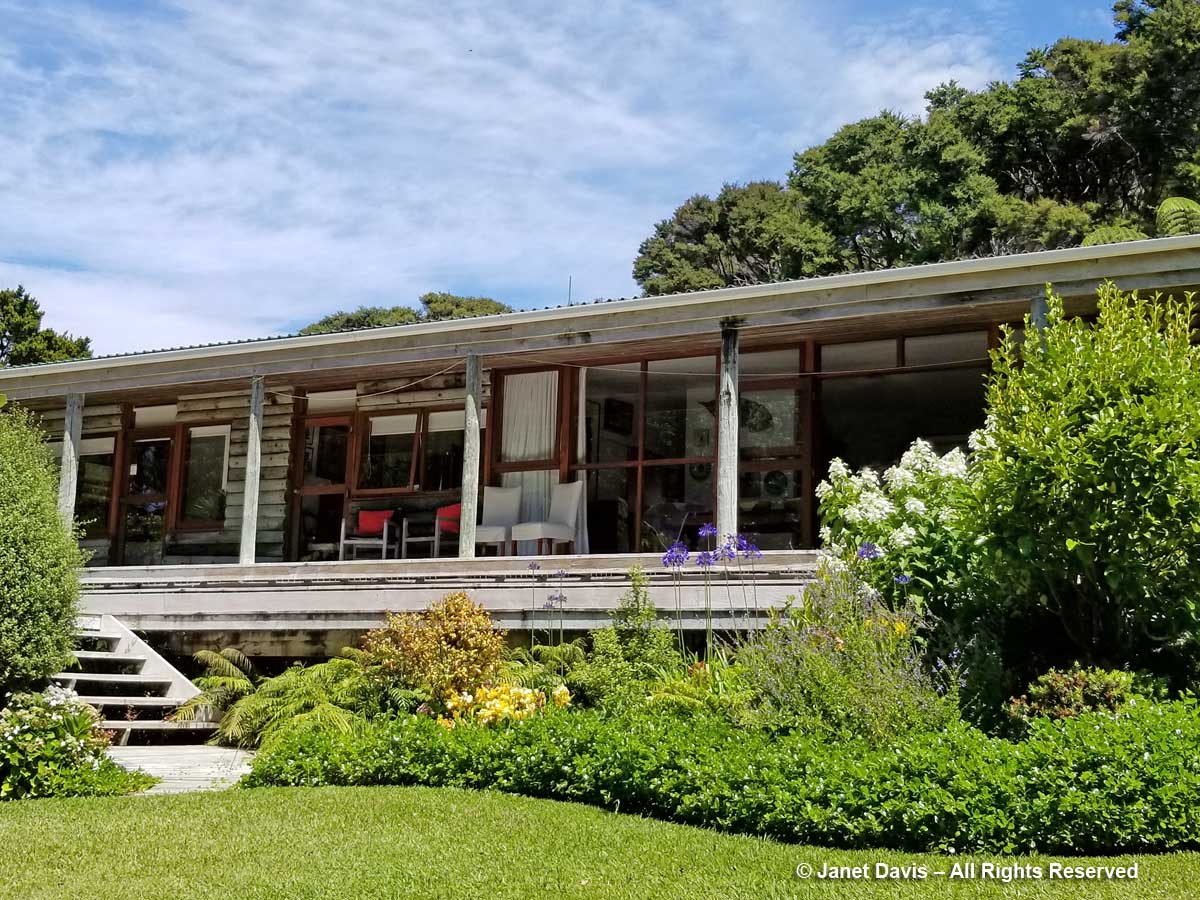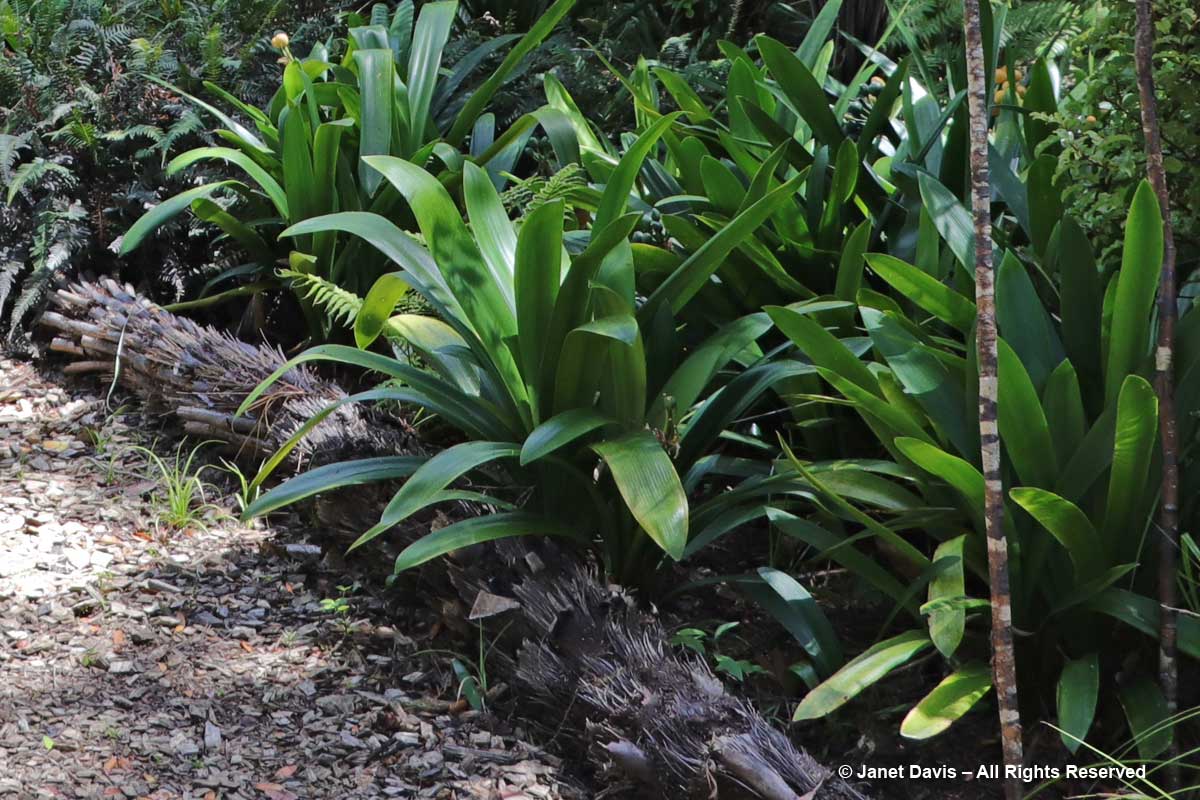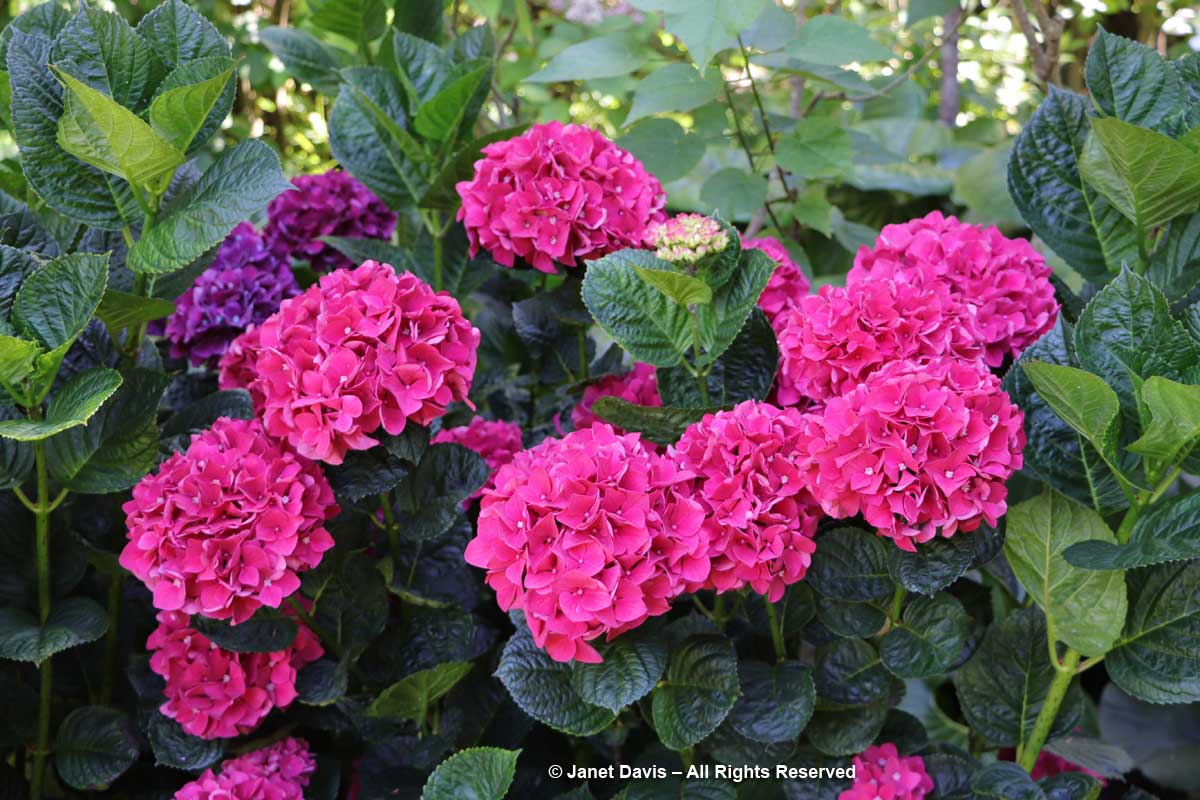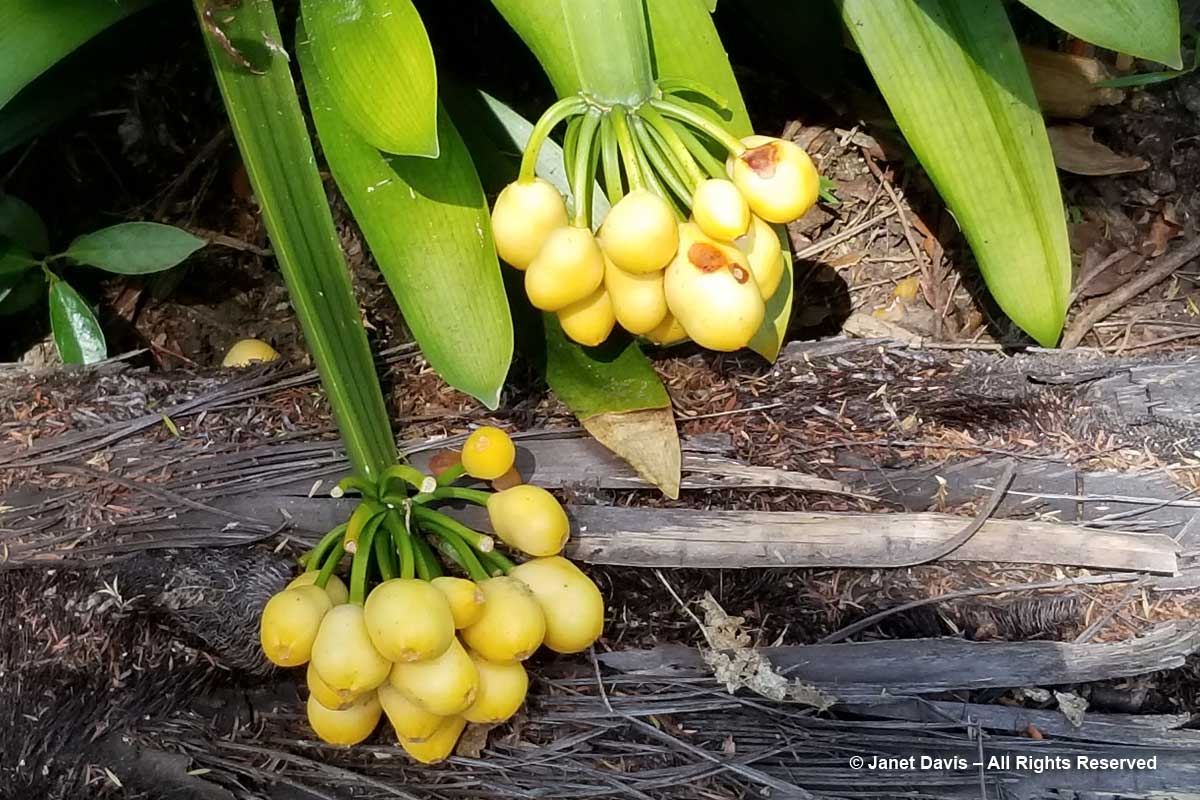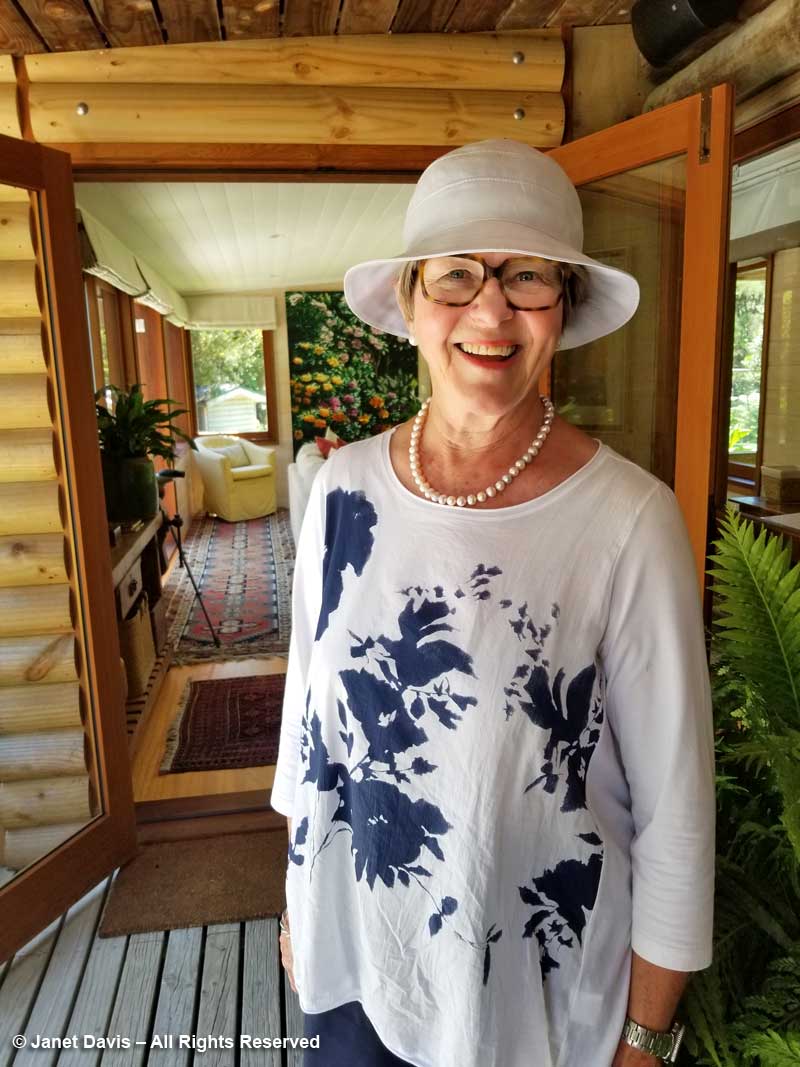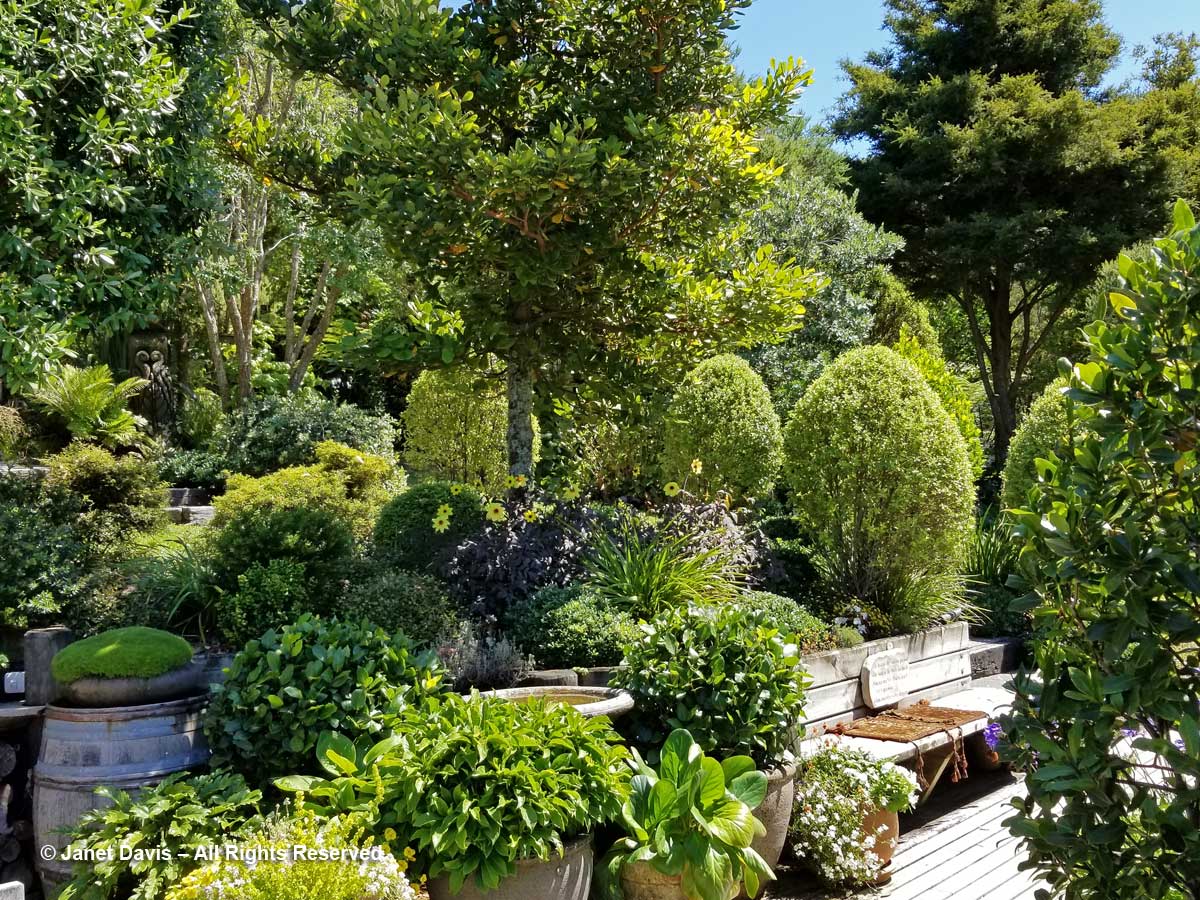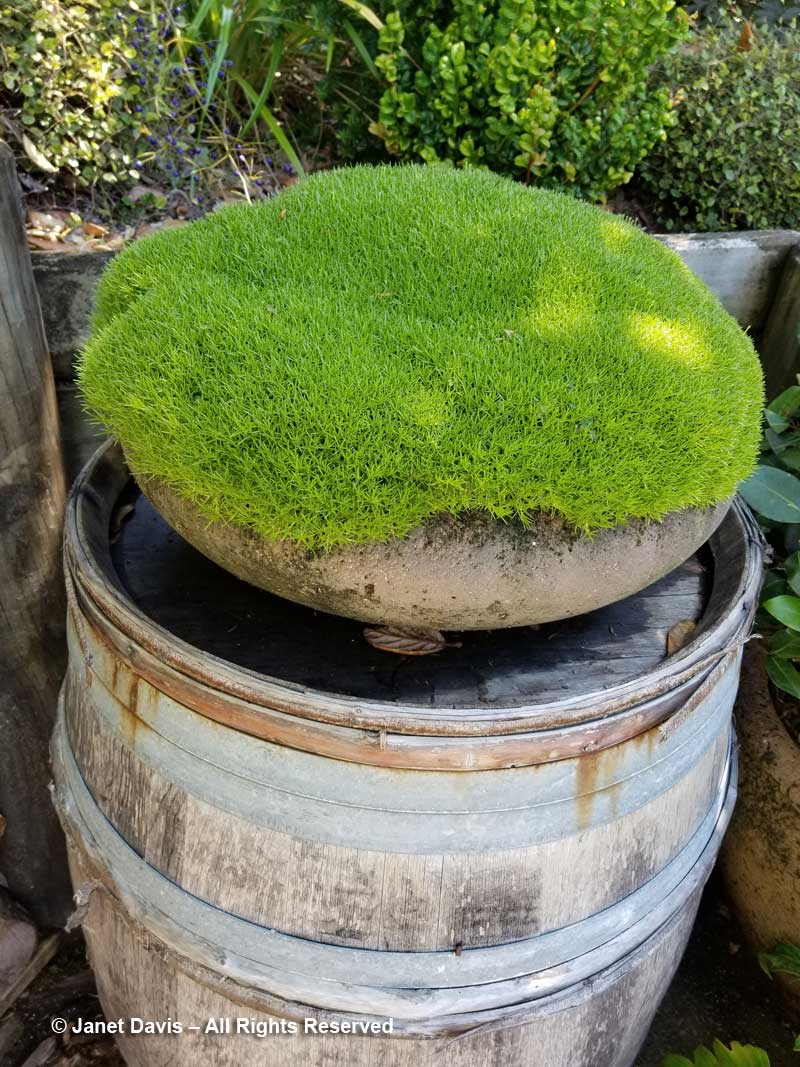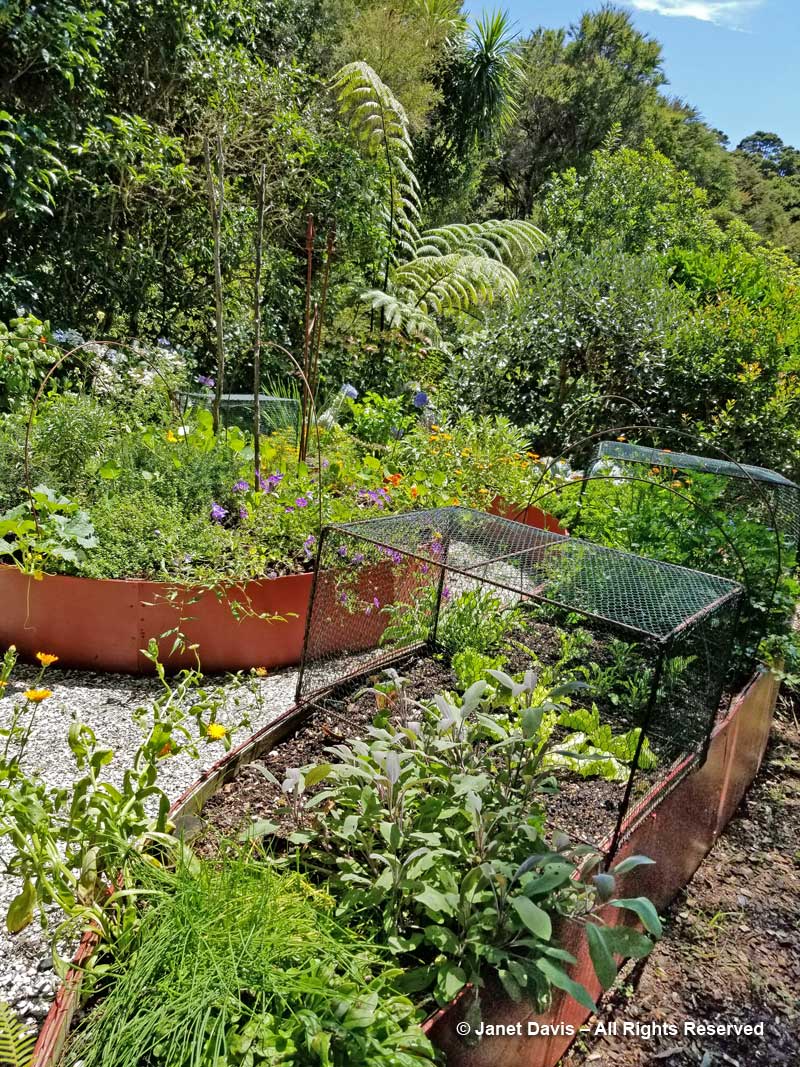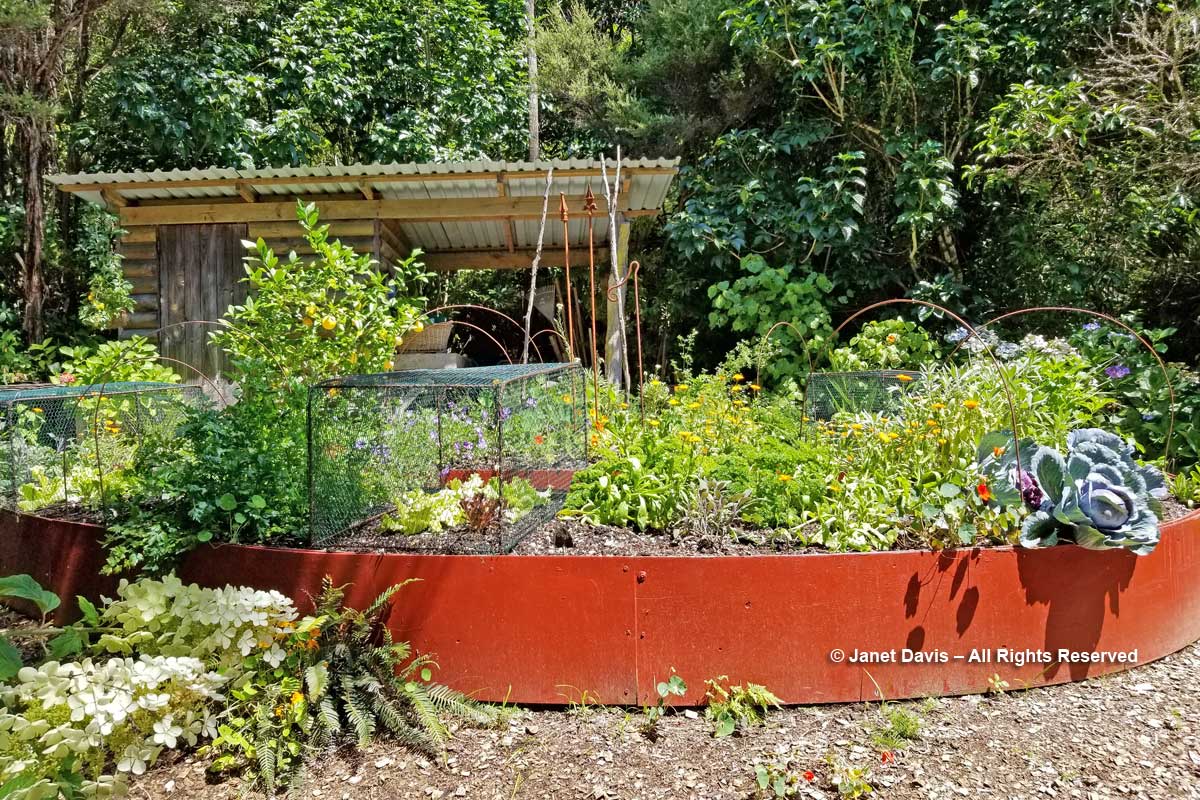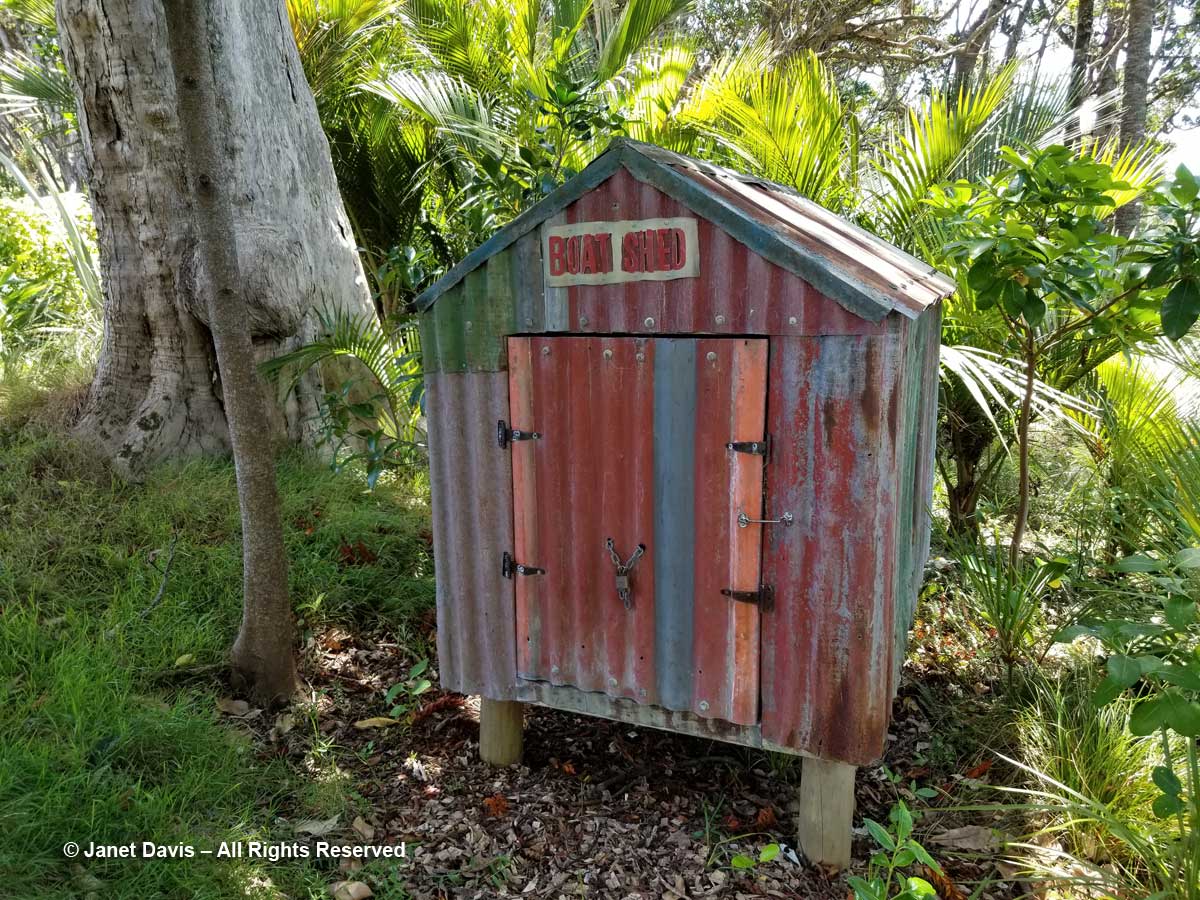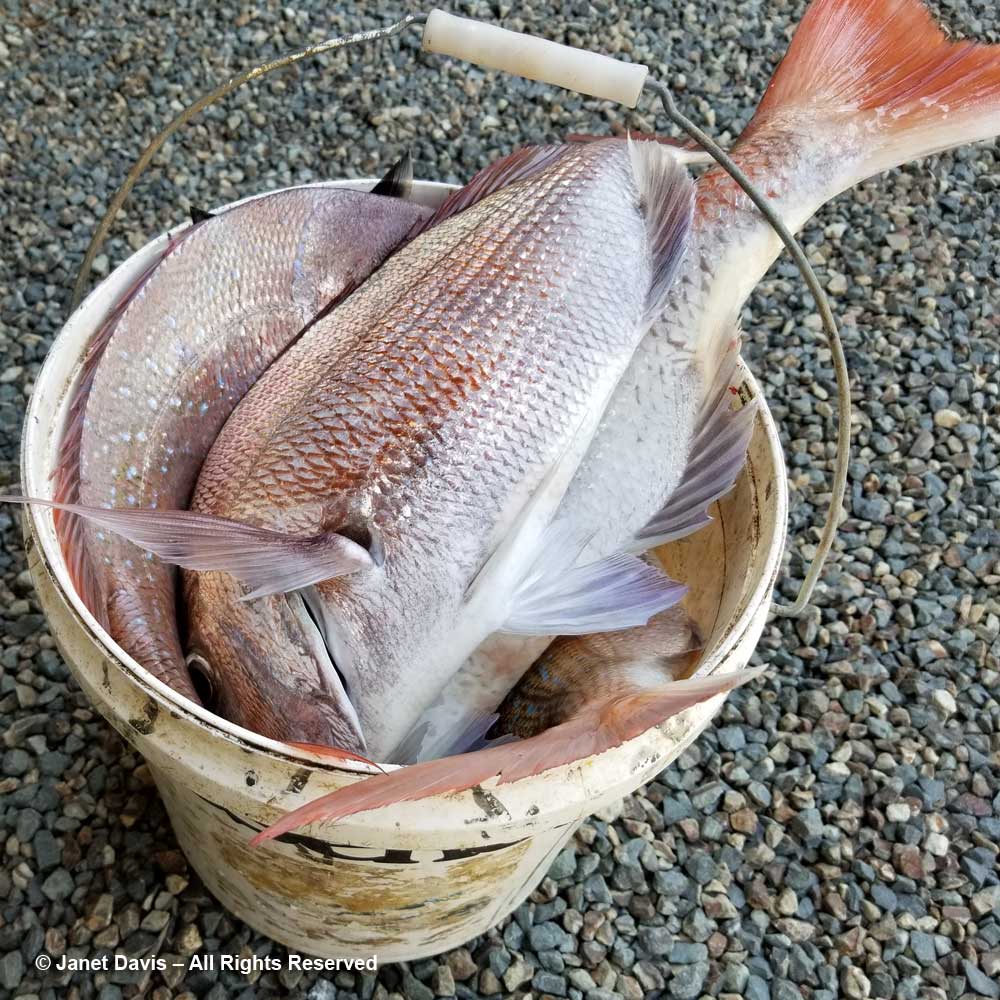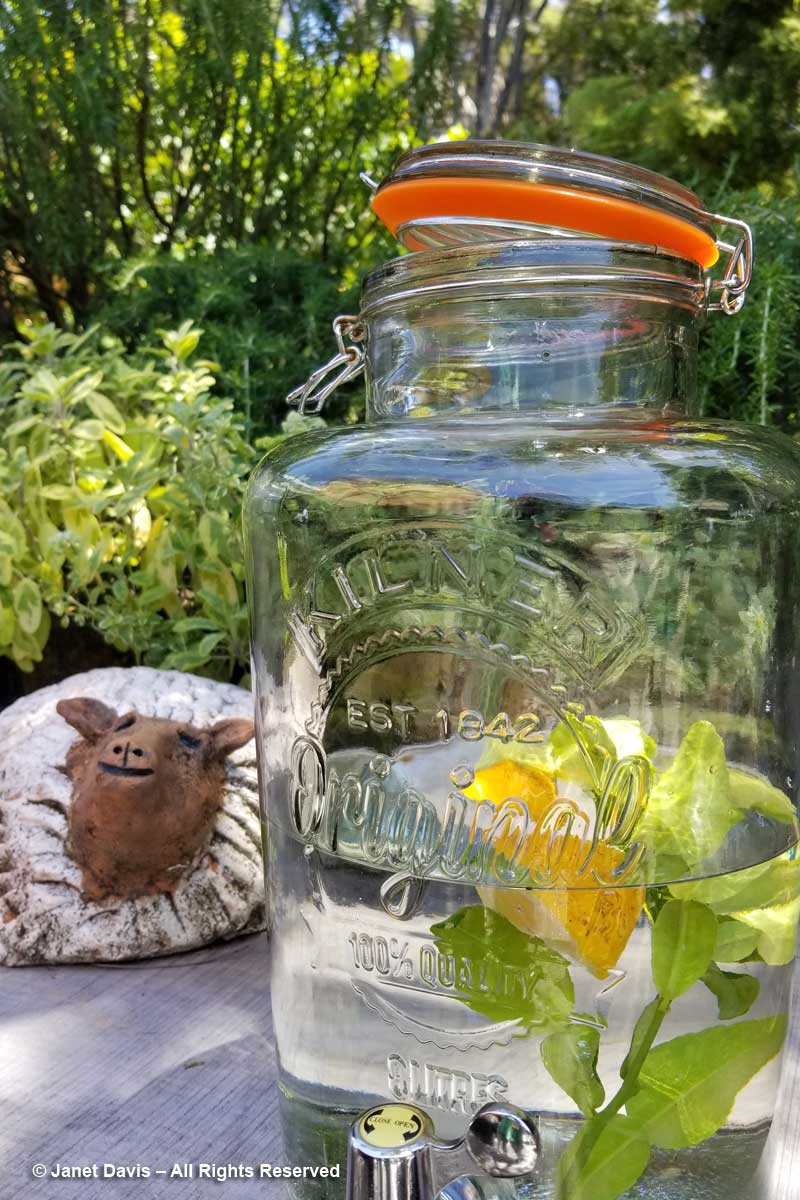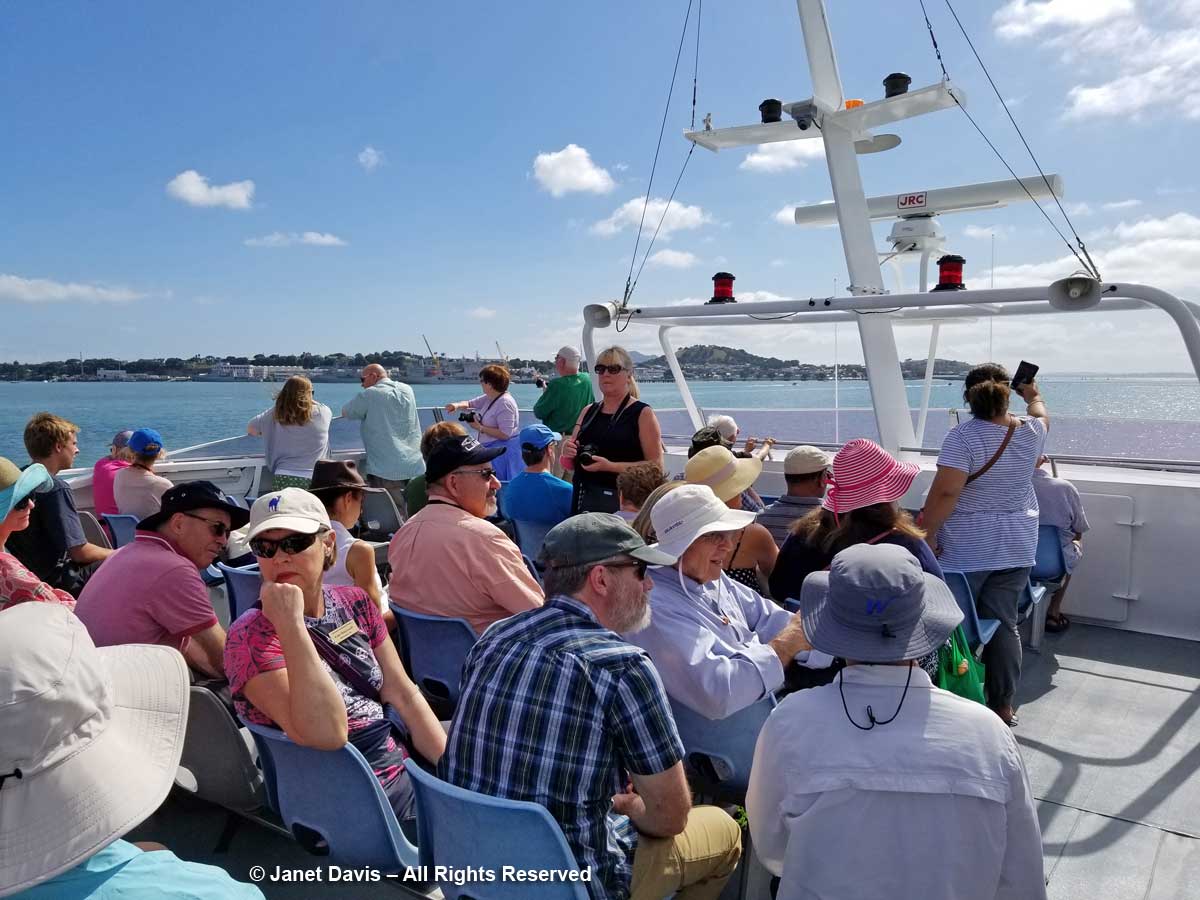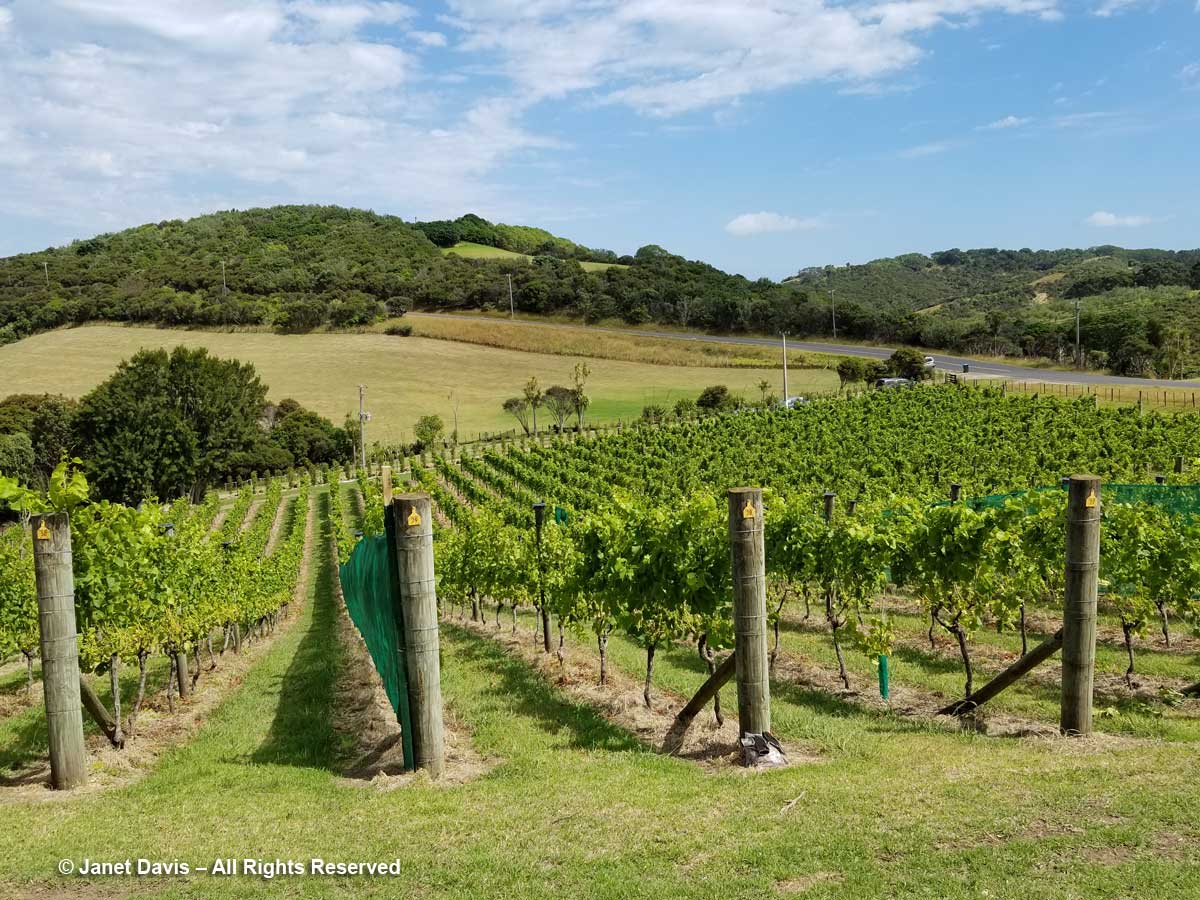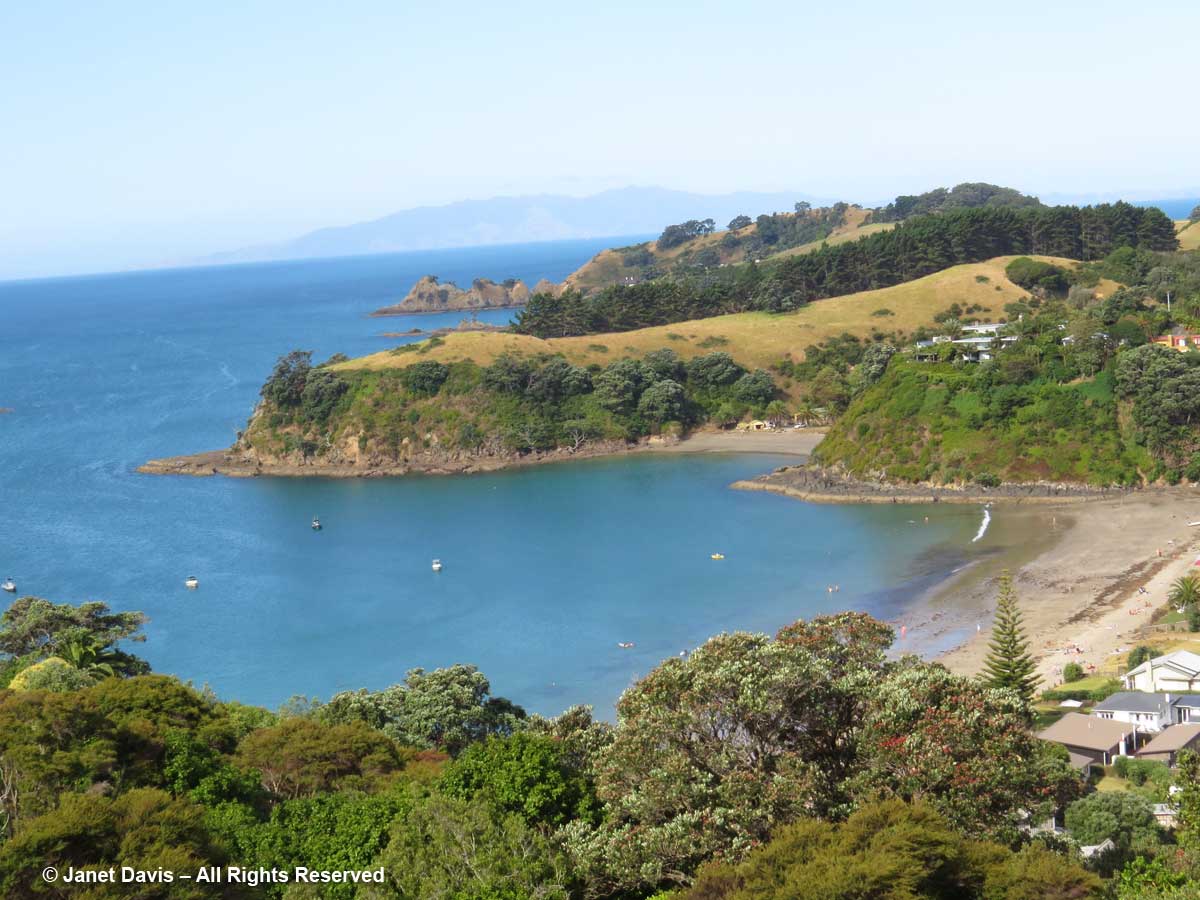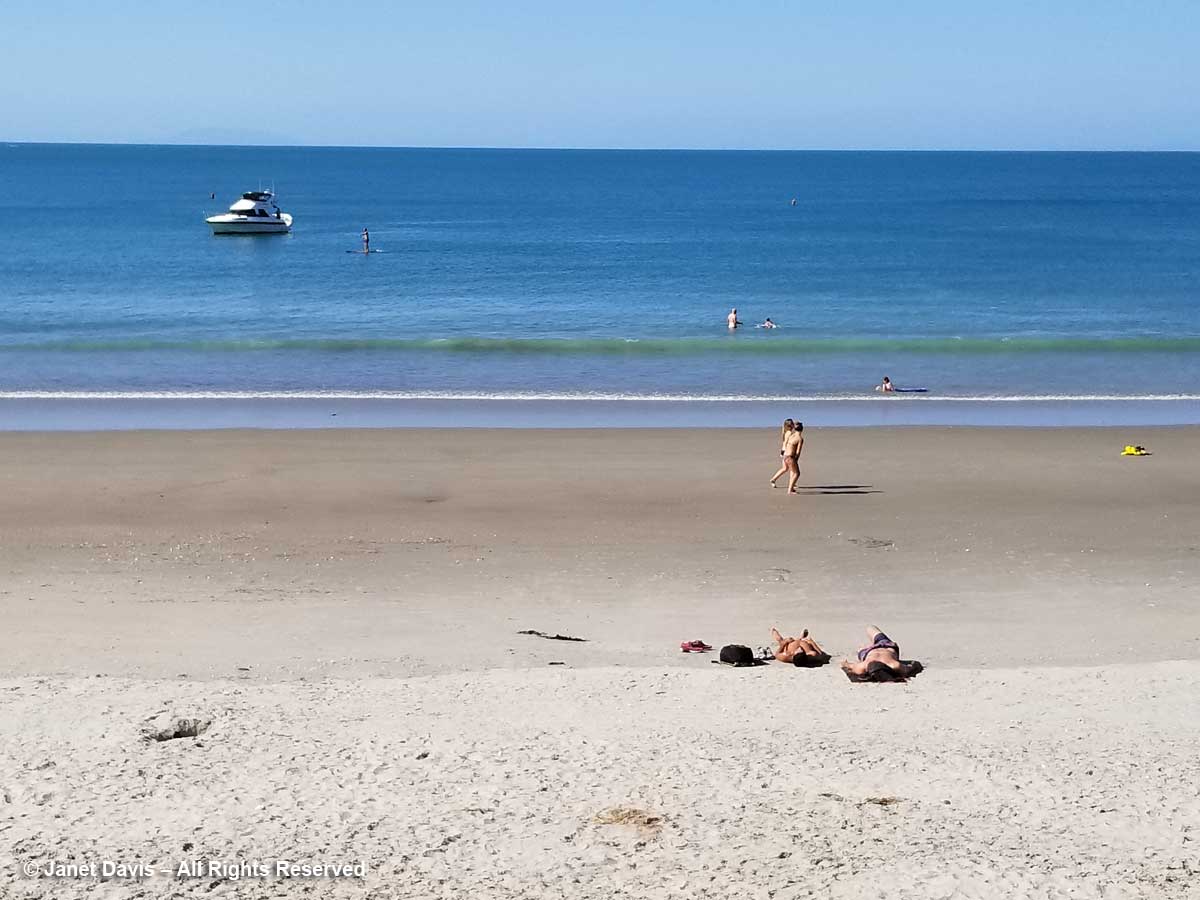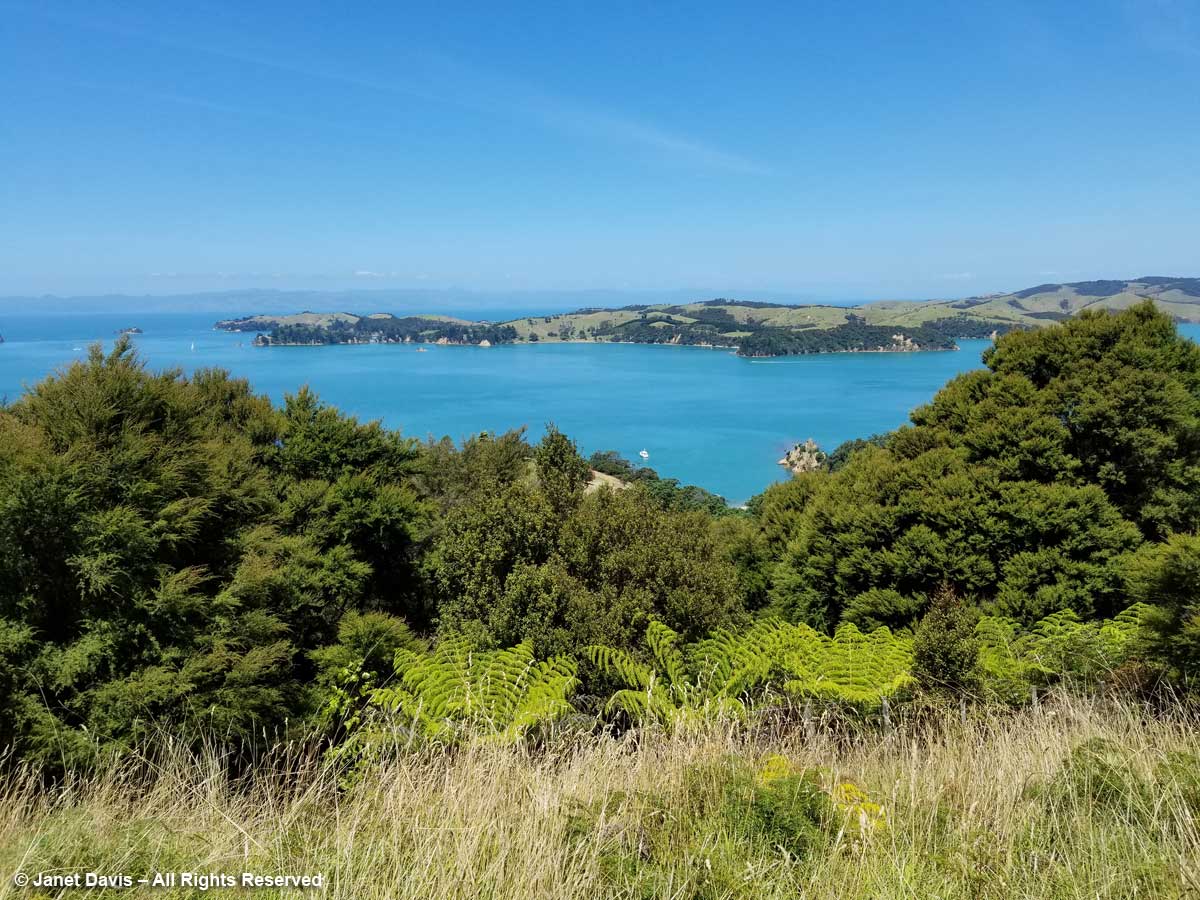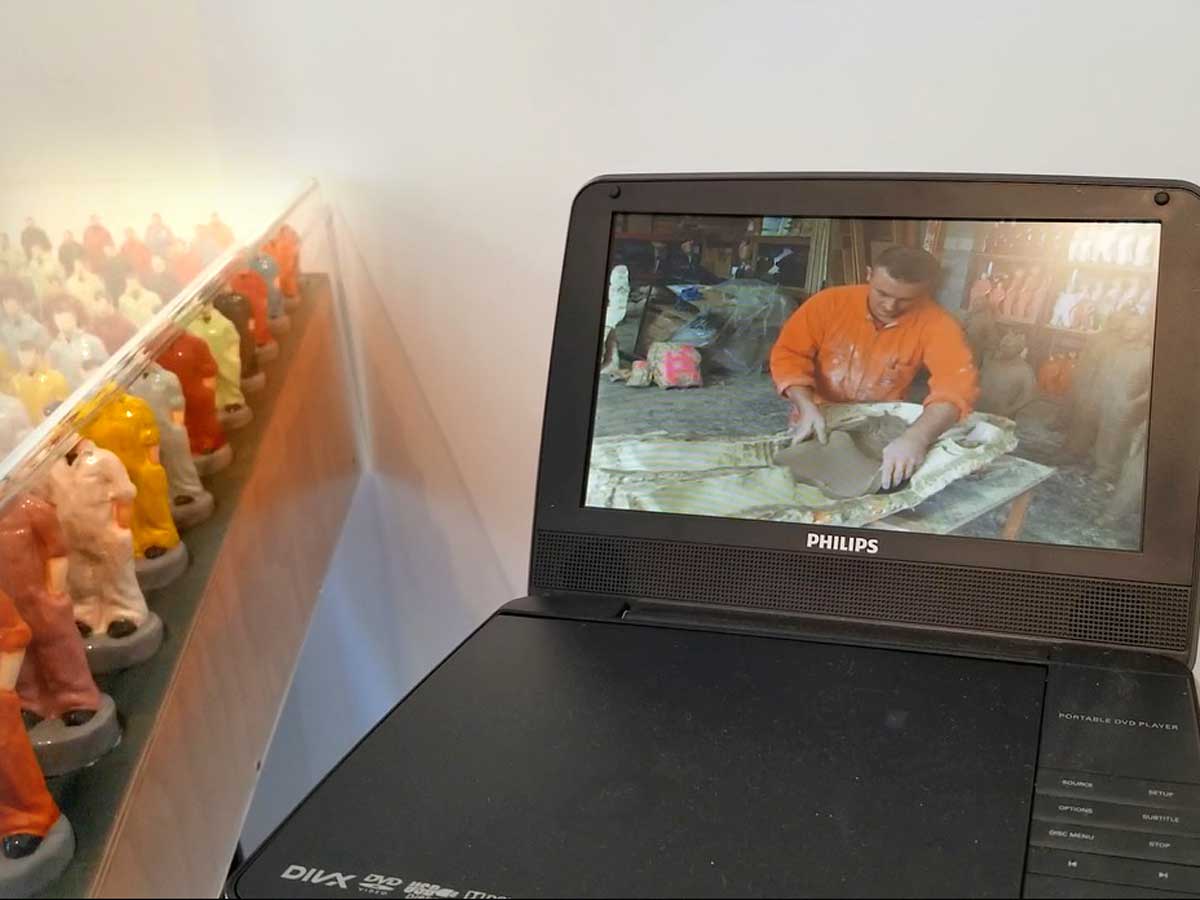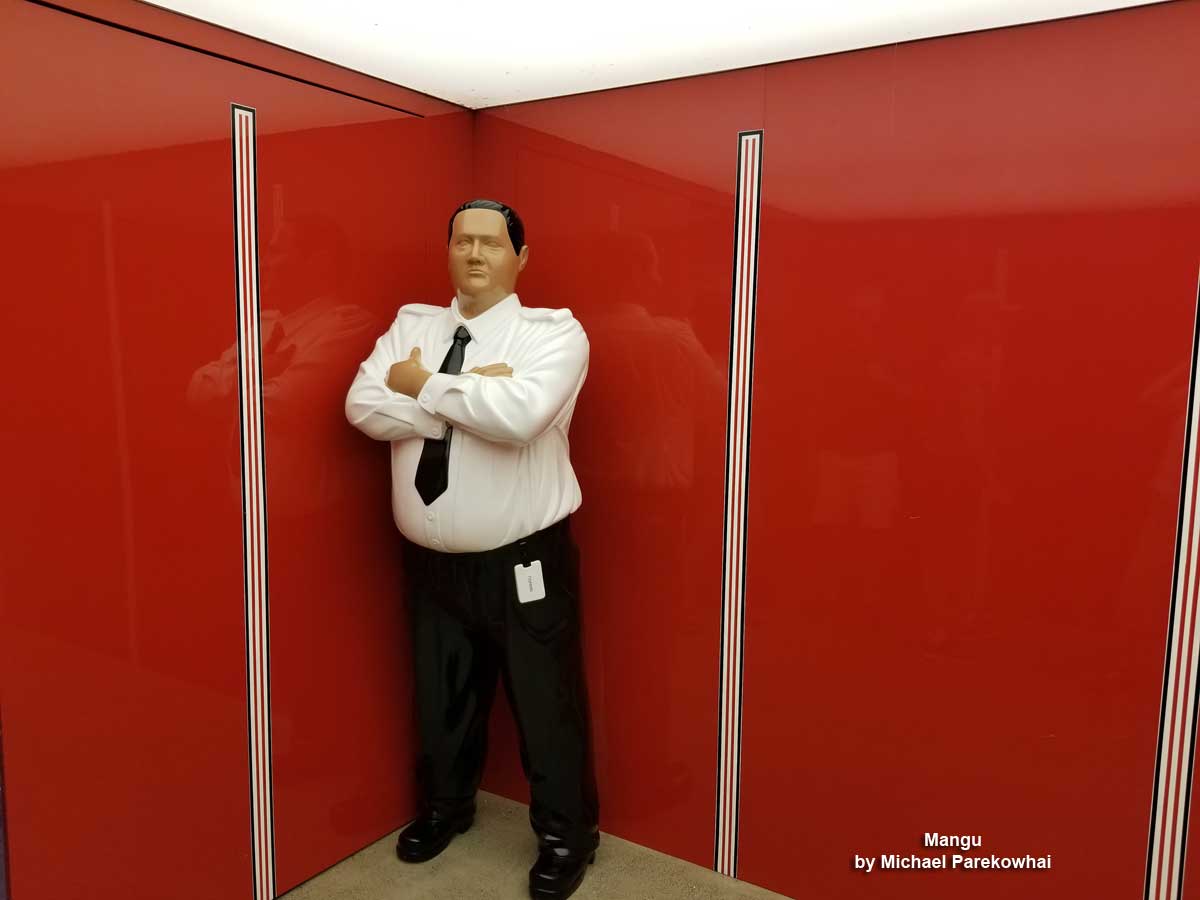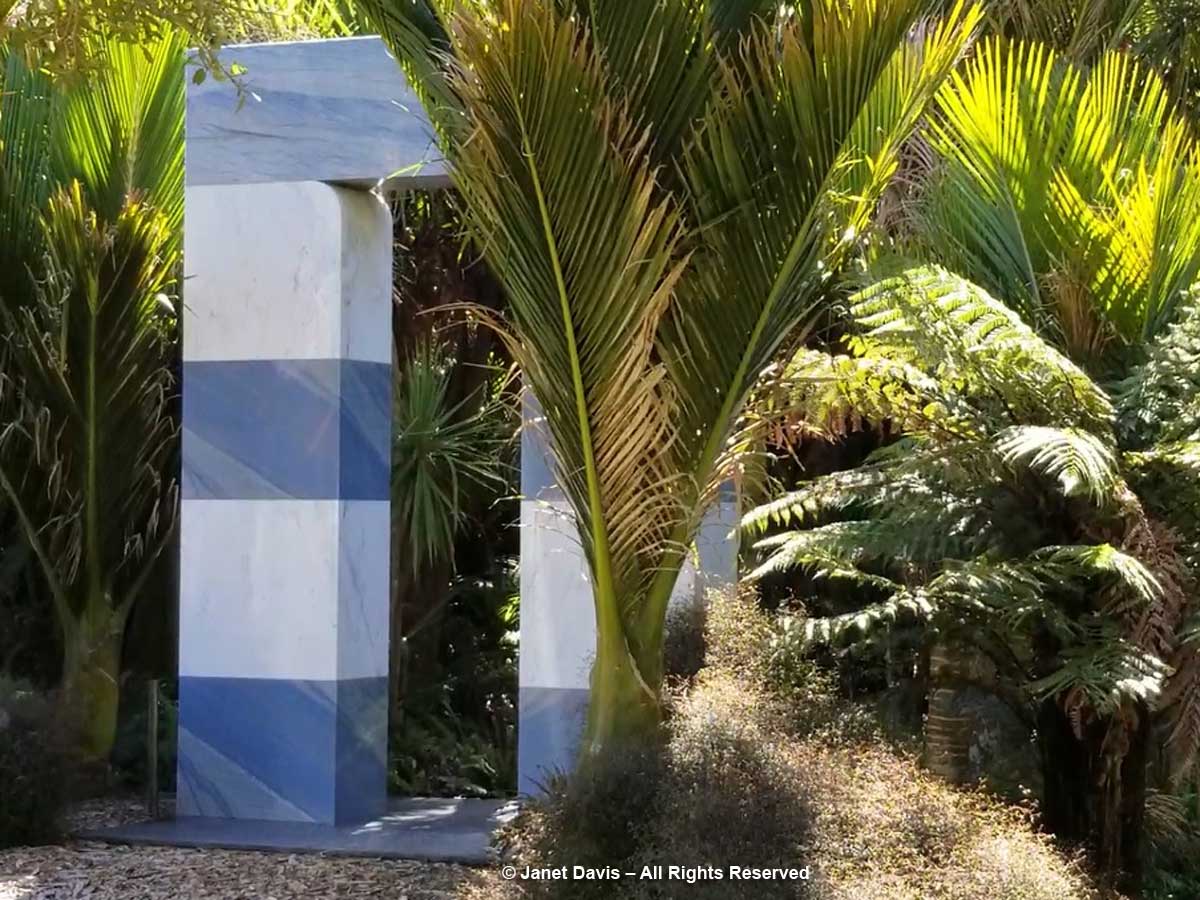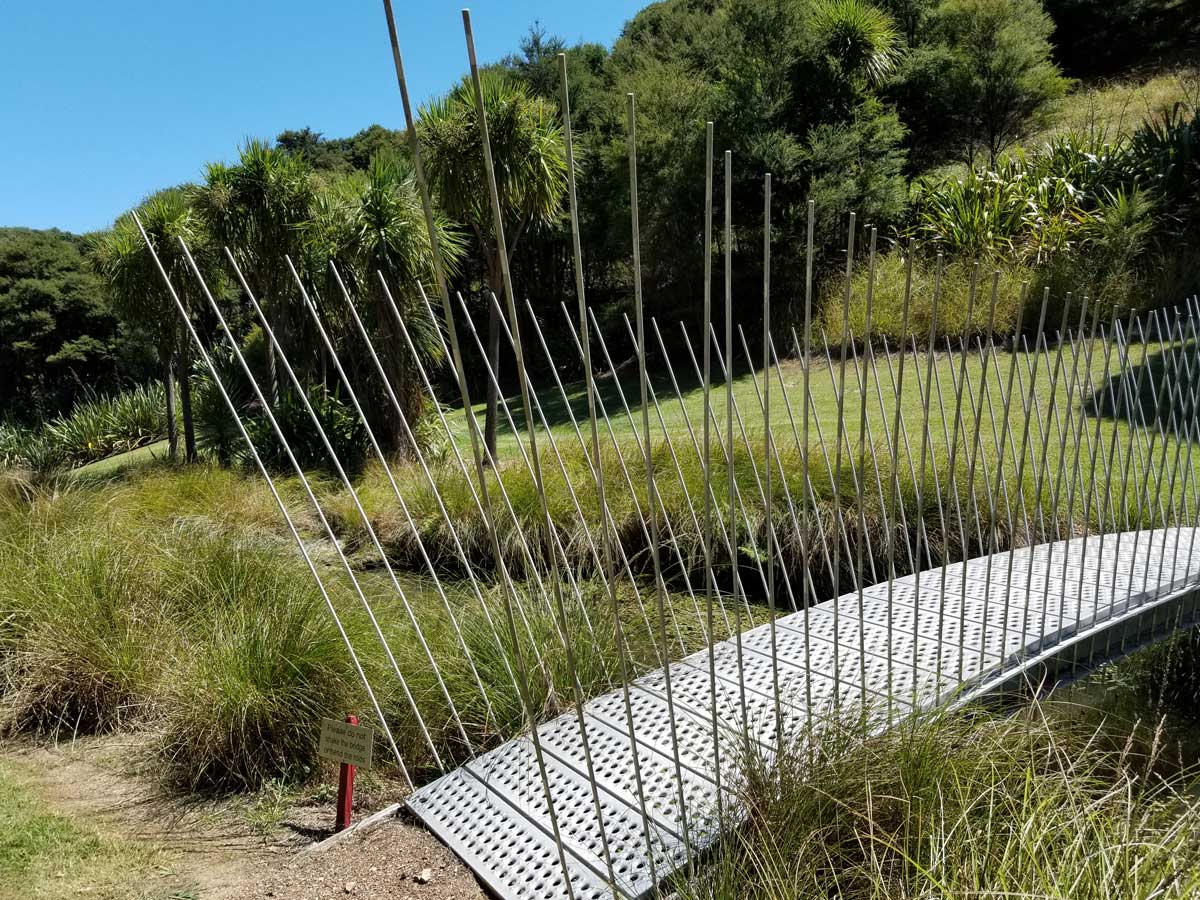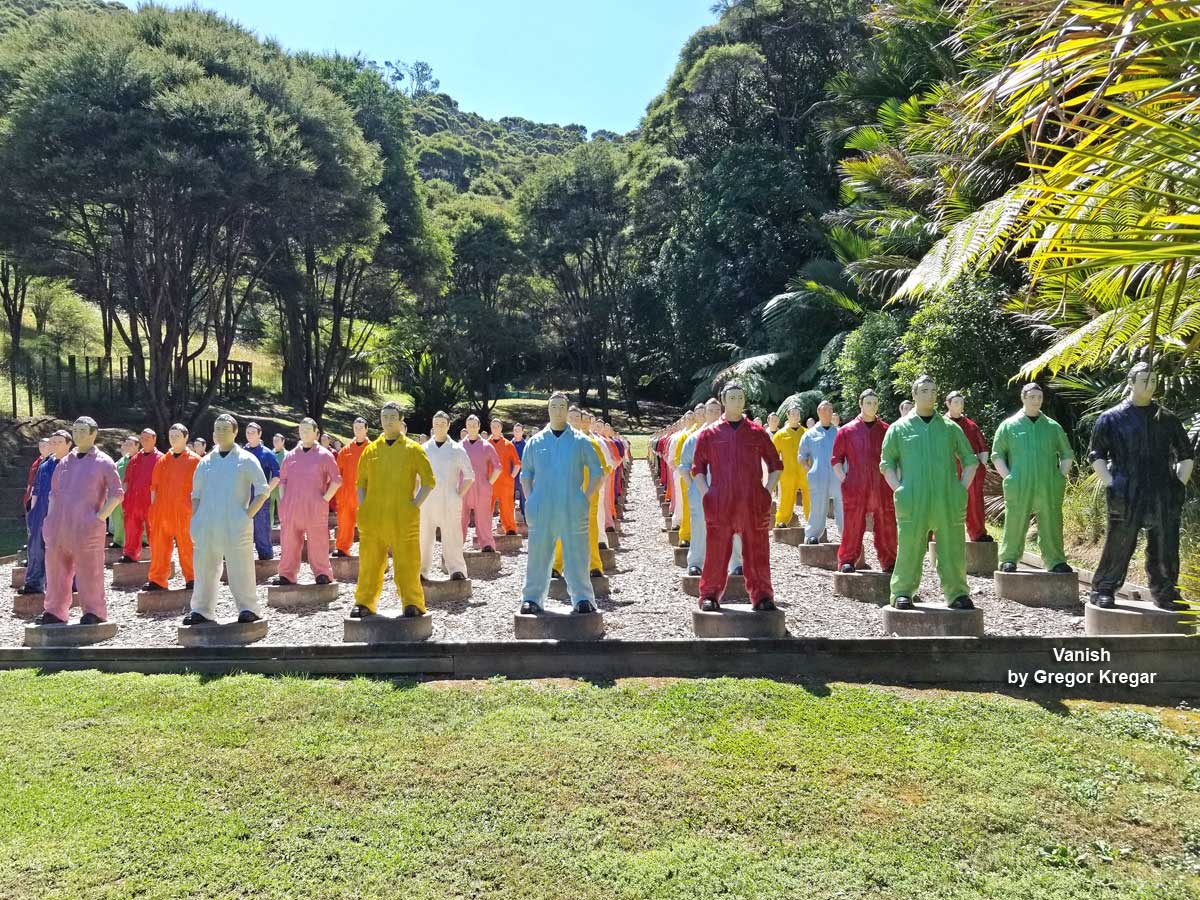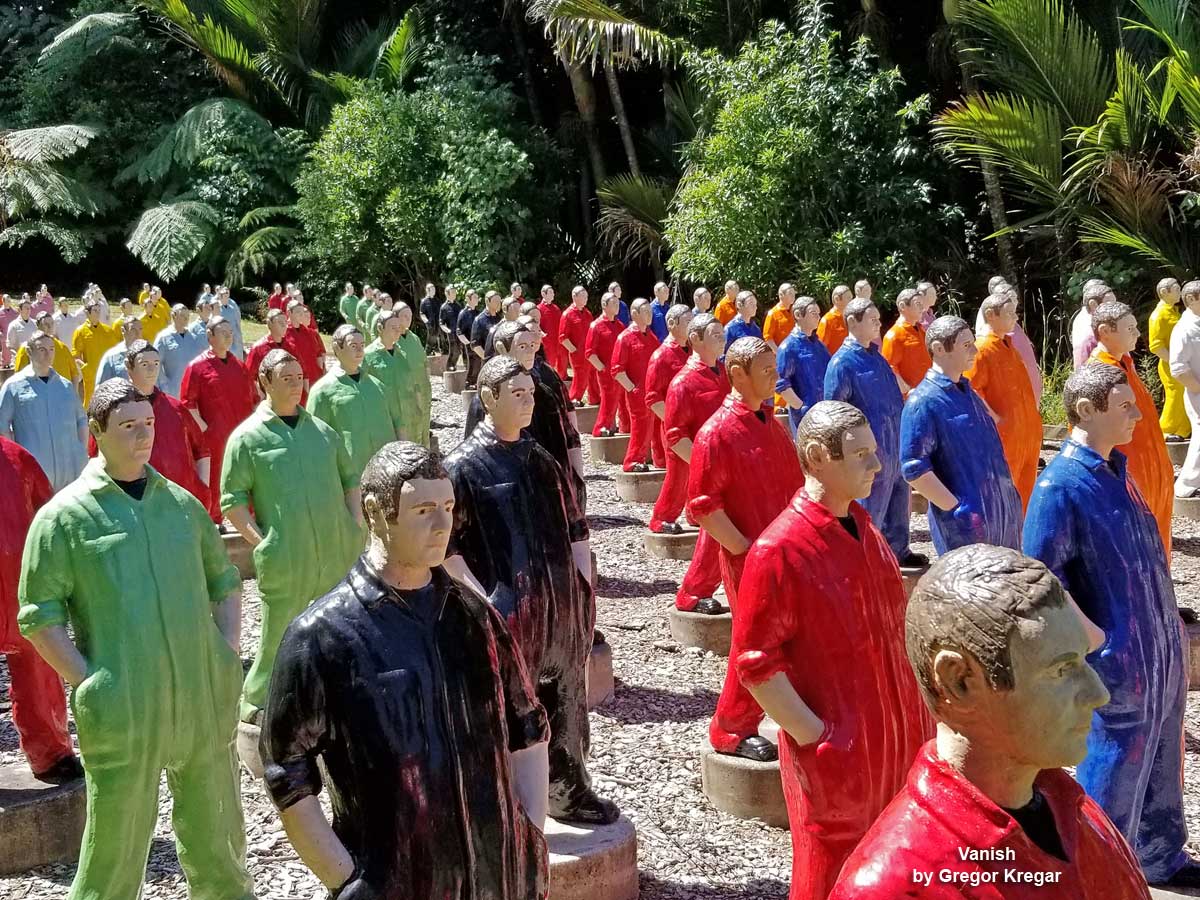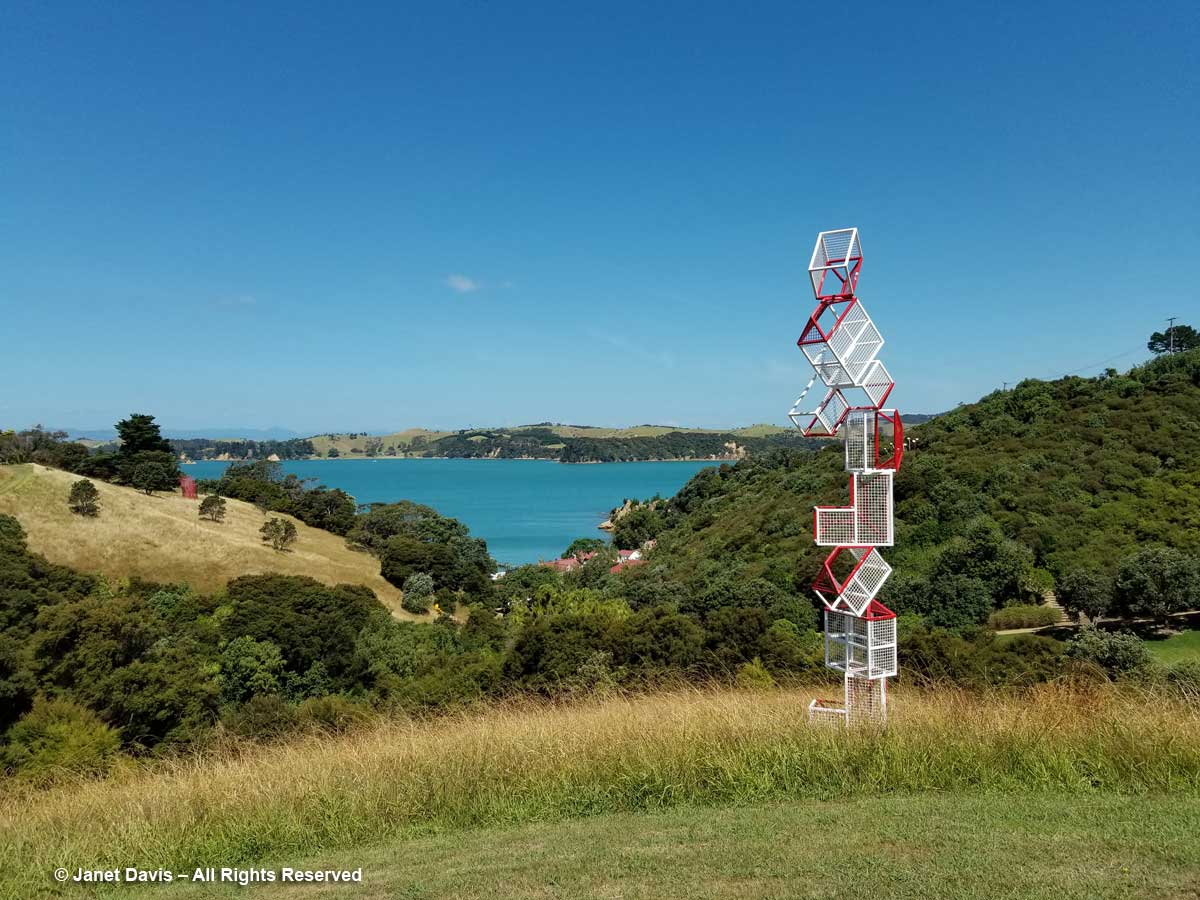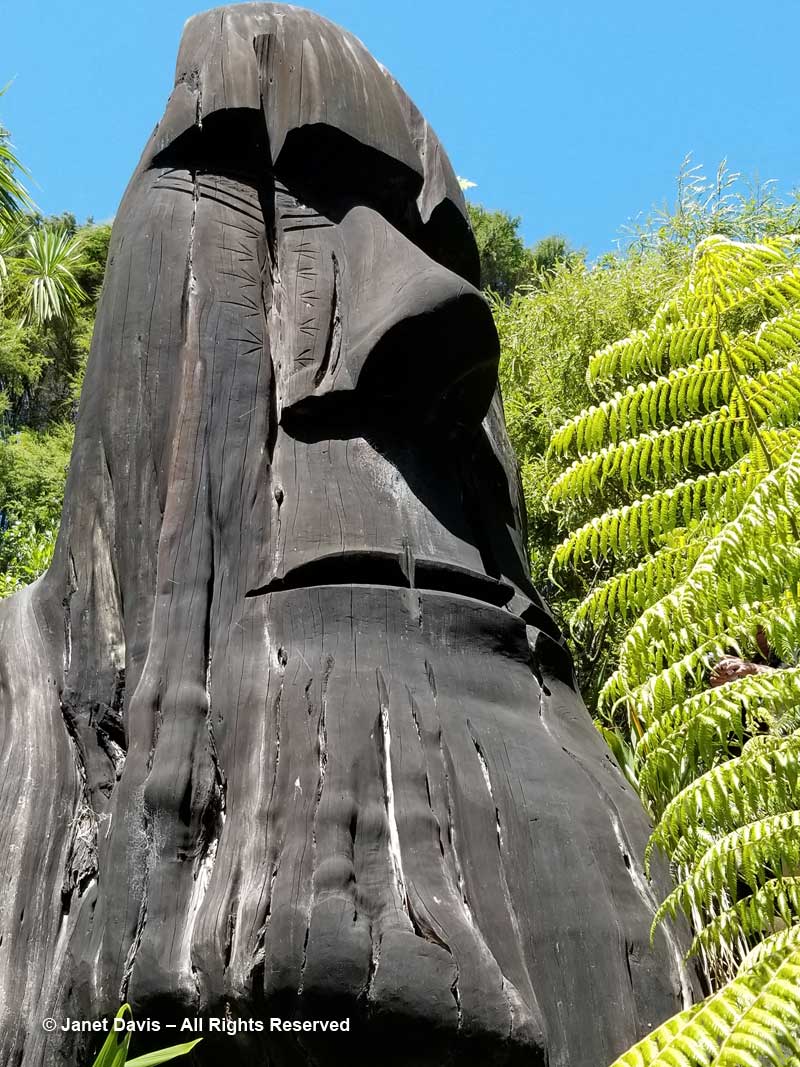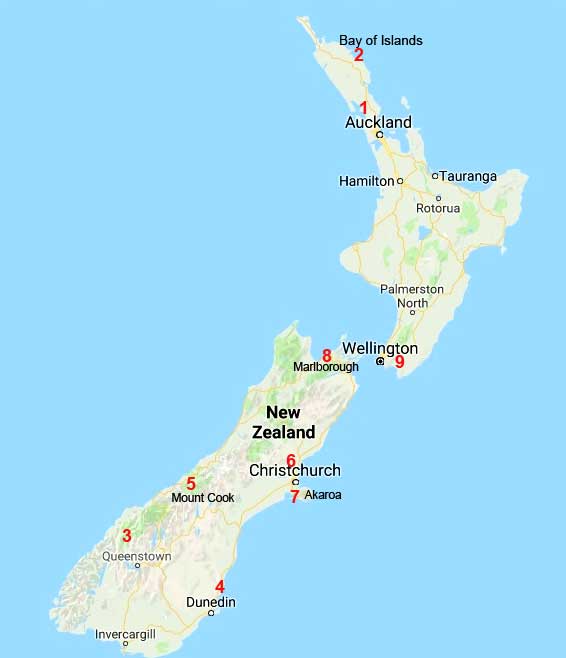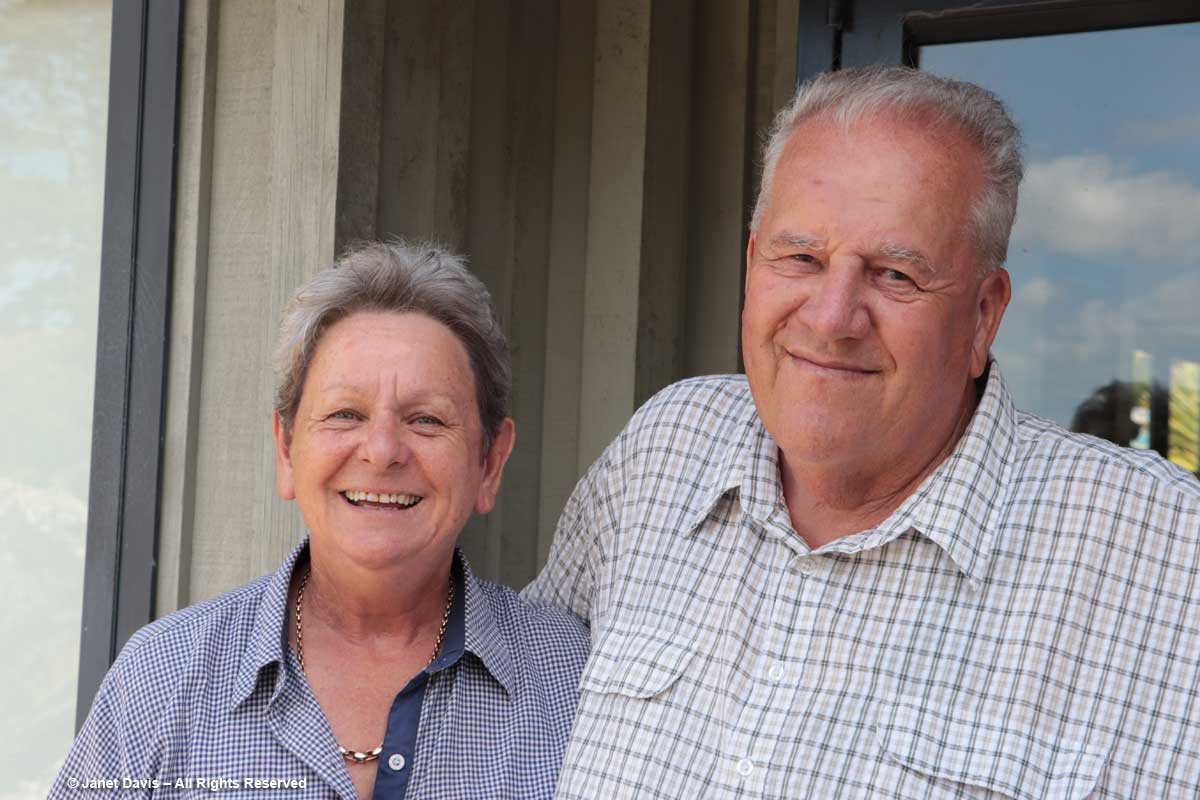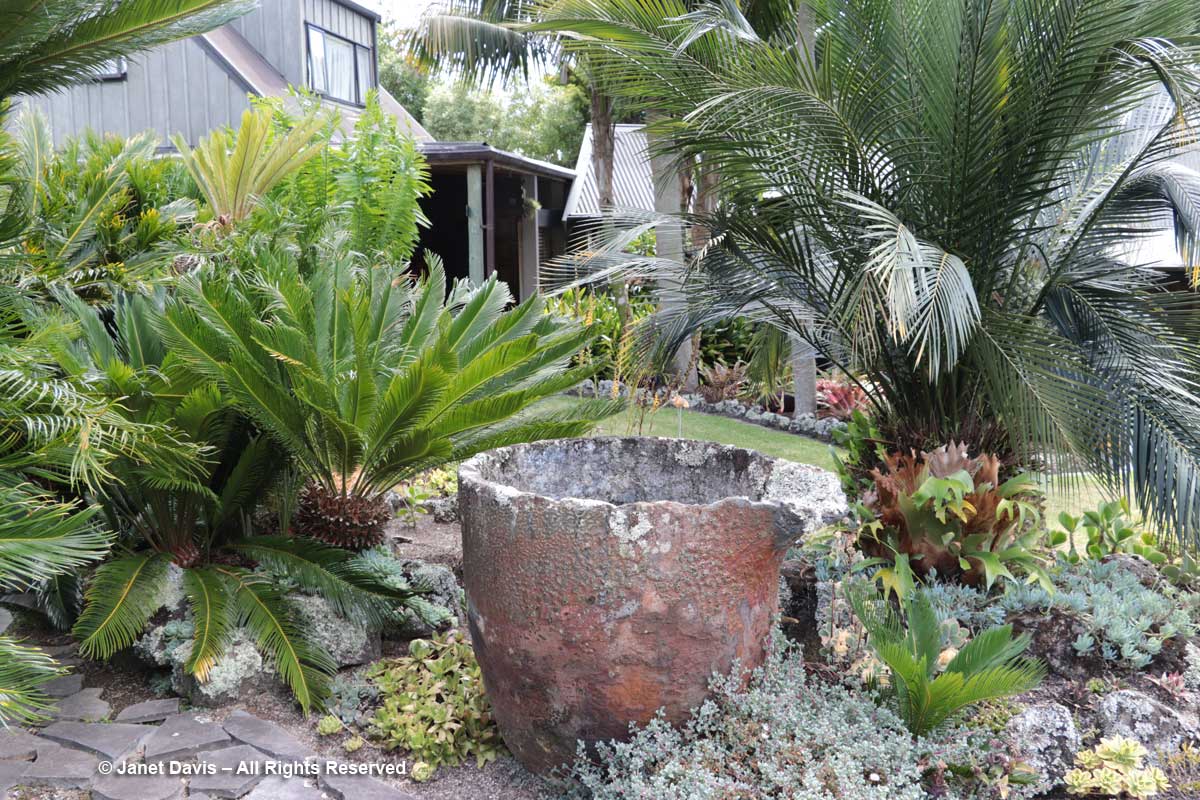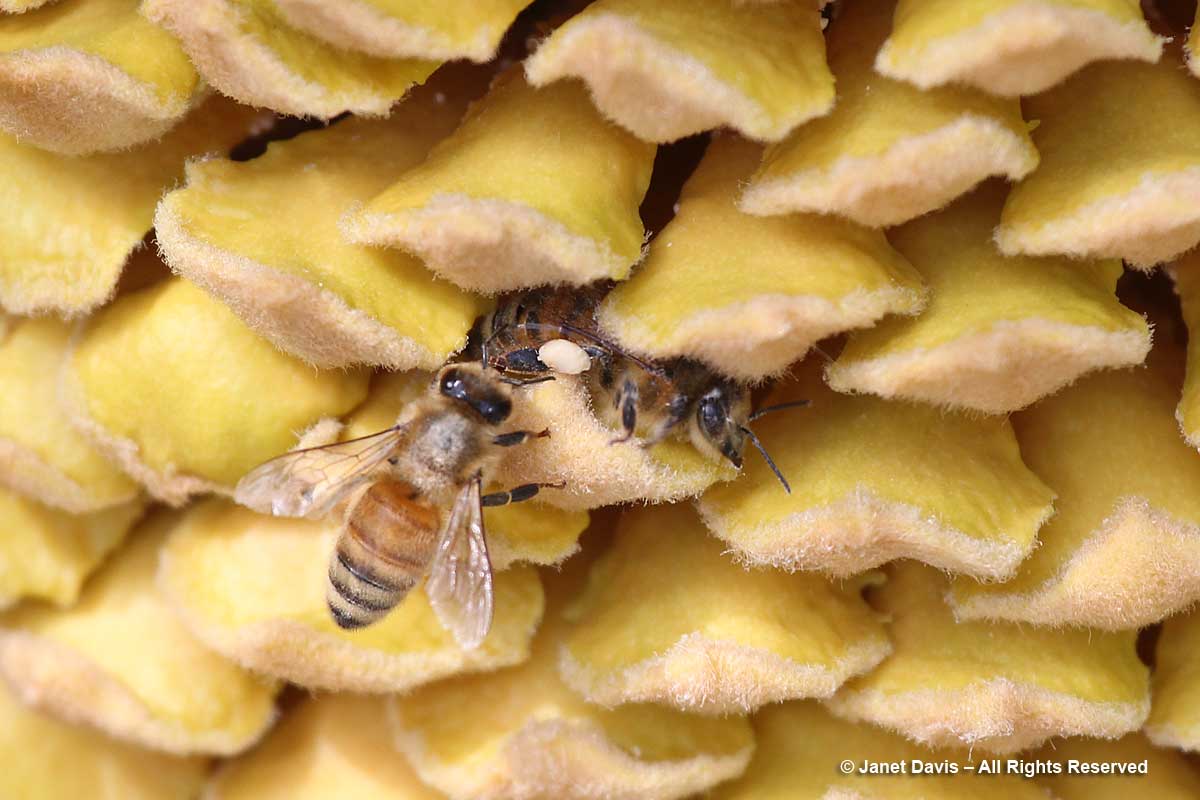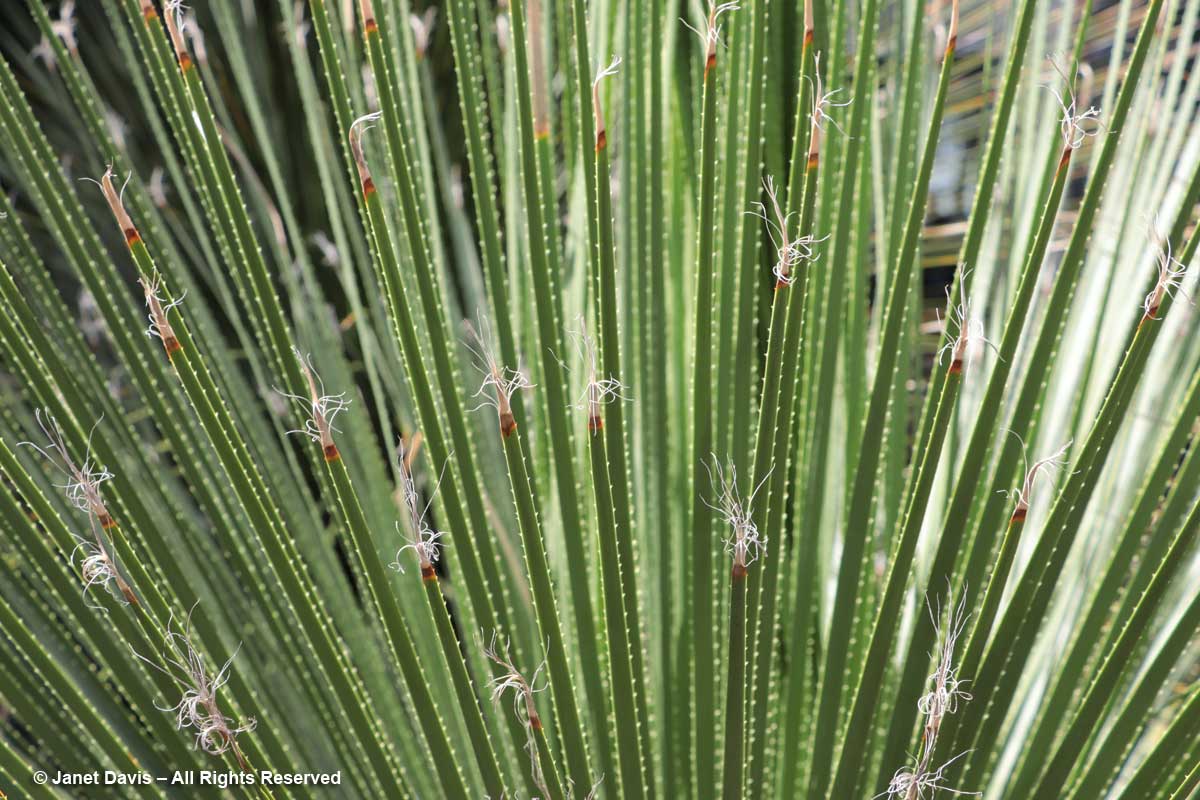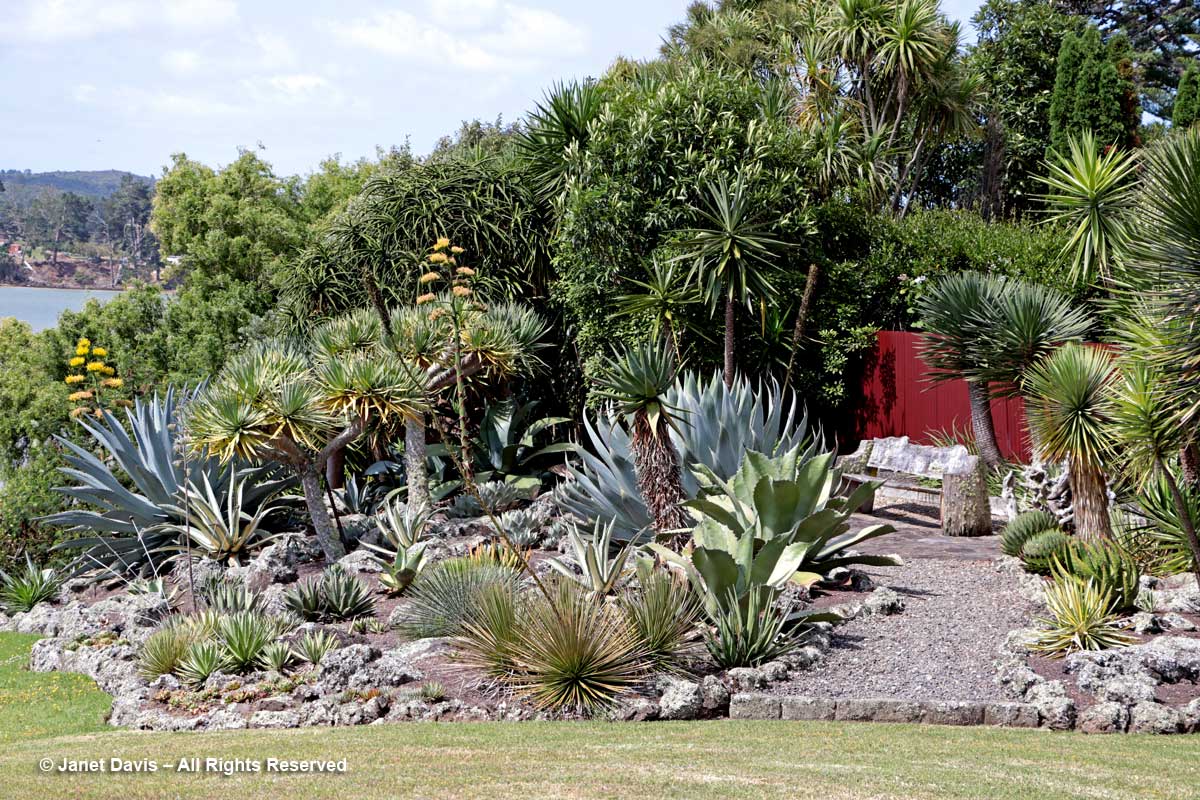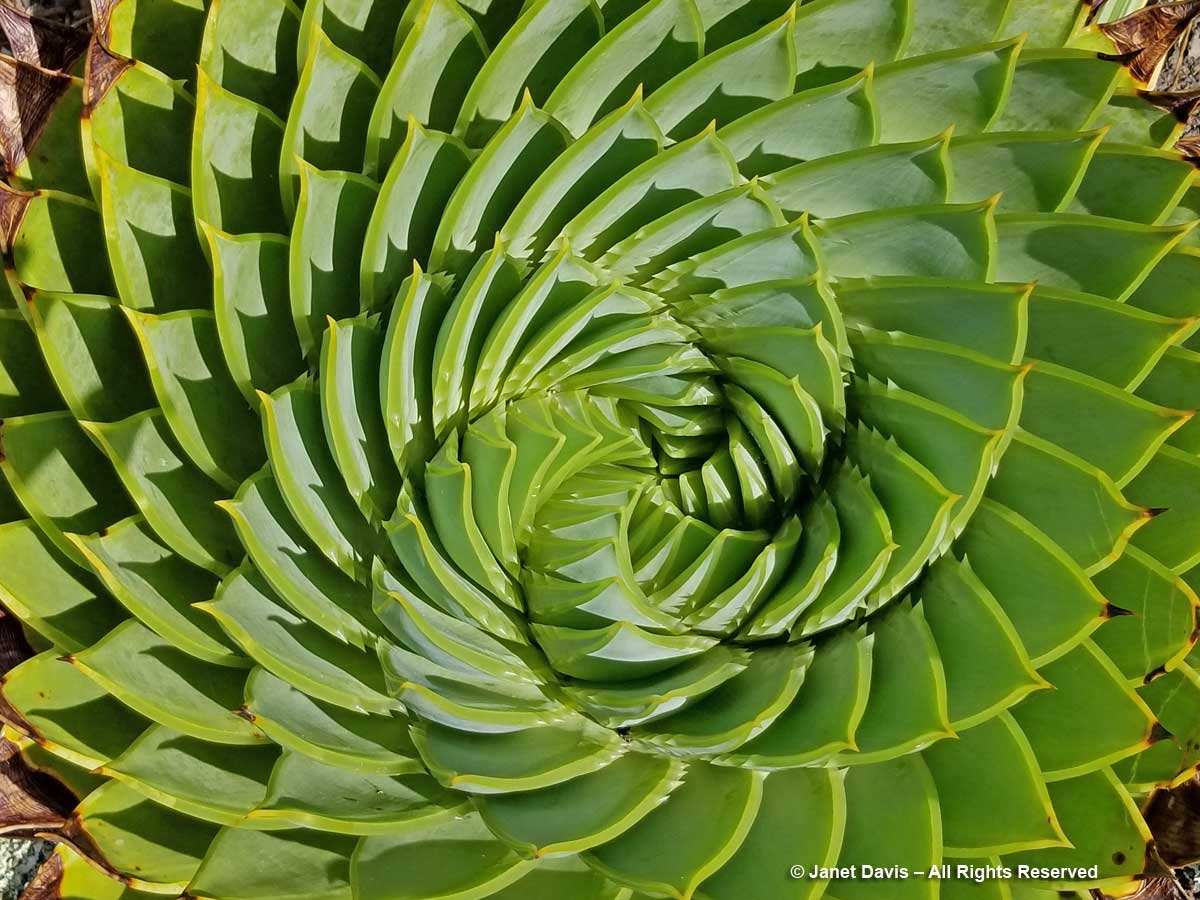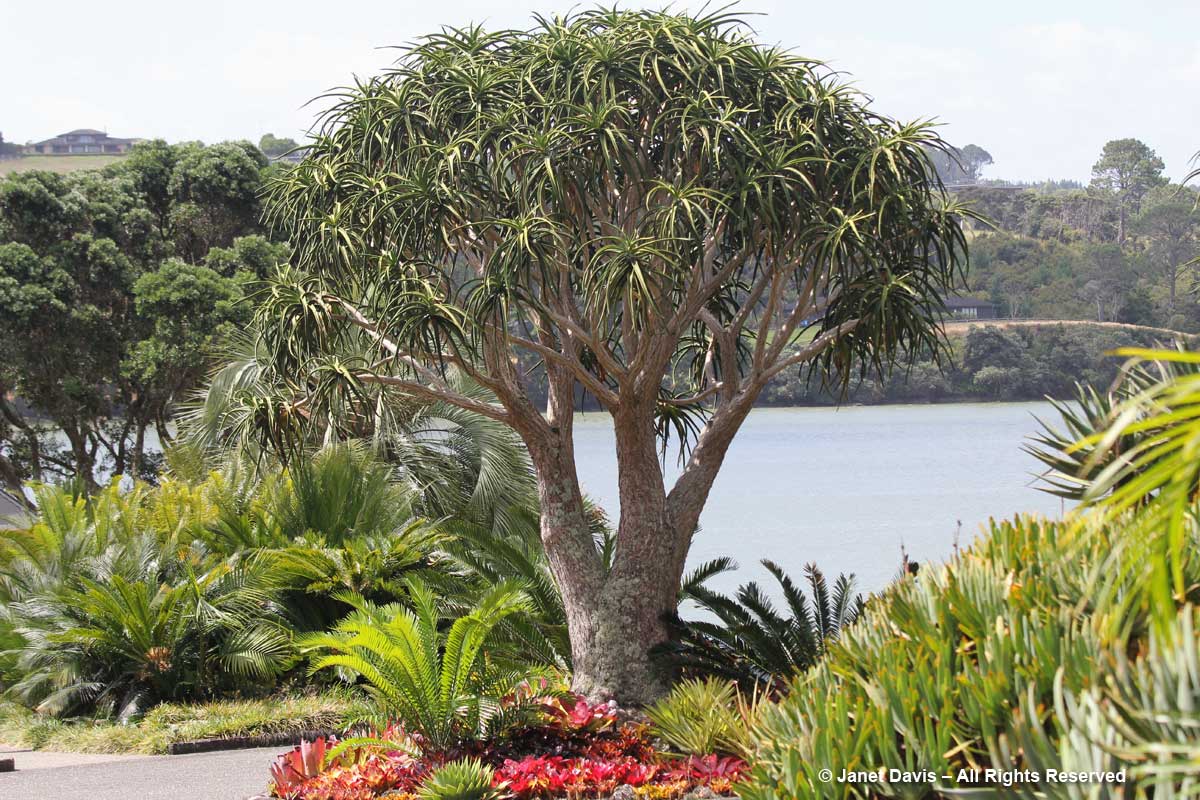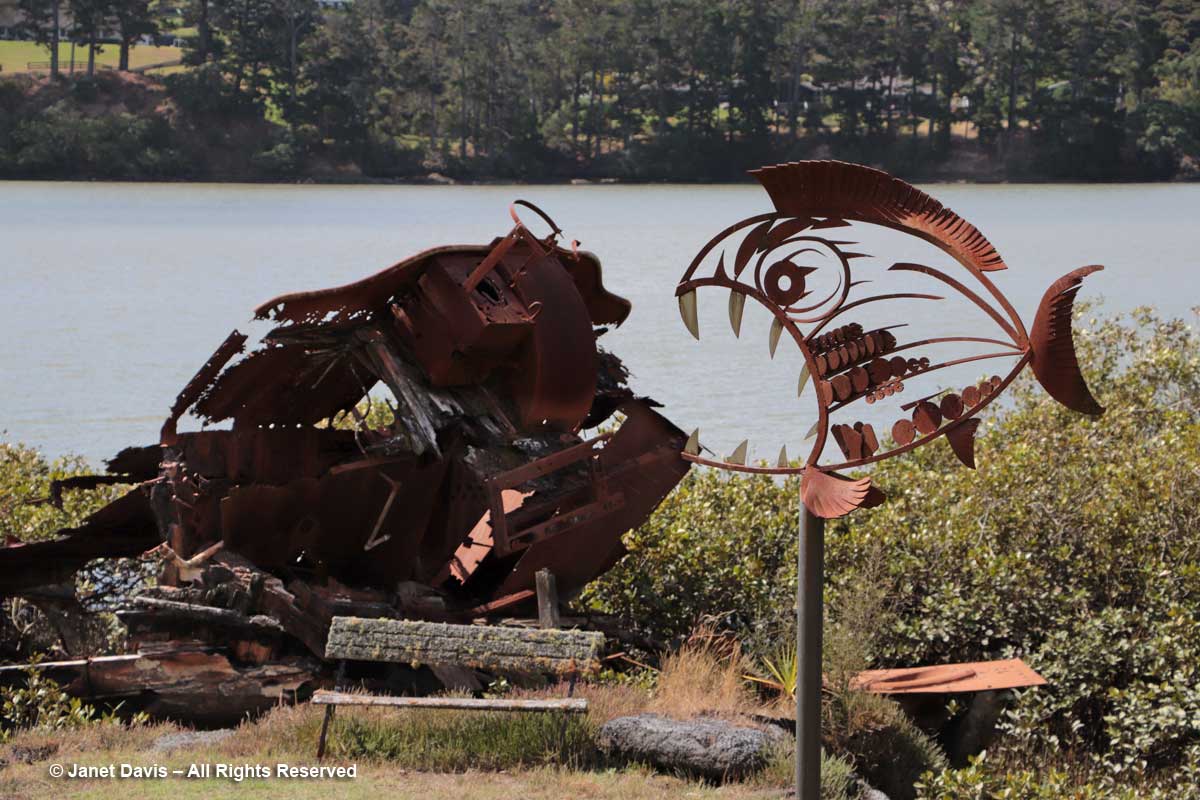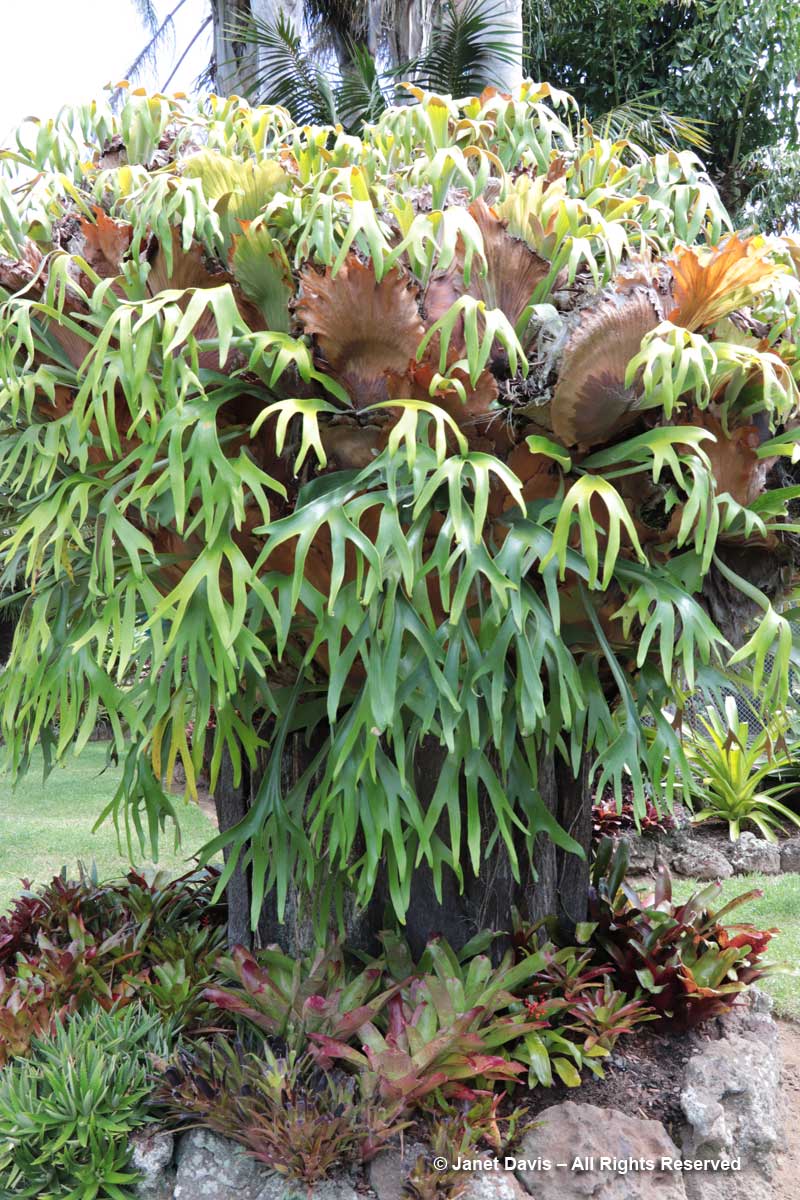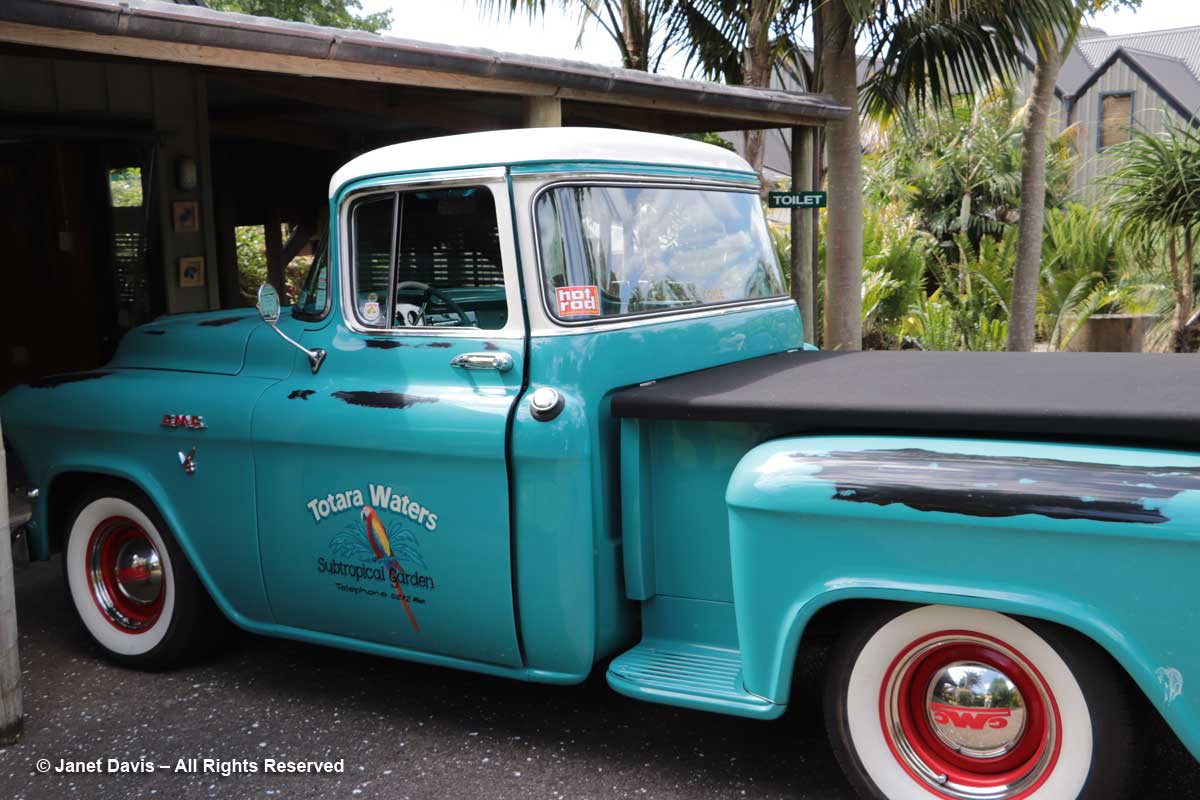One of the logistical tasks for a tour guide in a country where the attractions are far-flung is to find a place to feed the tour members lunch. In New Zealand, our guide Richard Lyon accomplished this necessary detail with great panache. We had eaten lunch in some of the most beautiful gardens in the country, so we were excited as we drove from Oamaru through the Waitaki River Valley, past the power plant at Waitaki Lake……
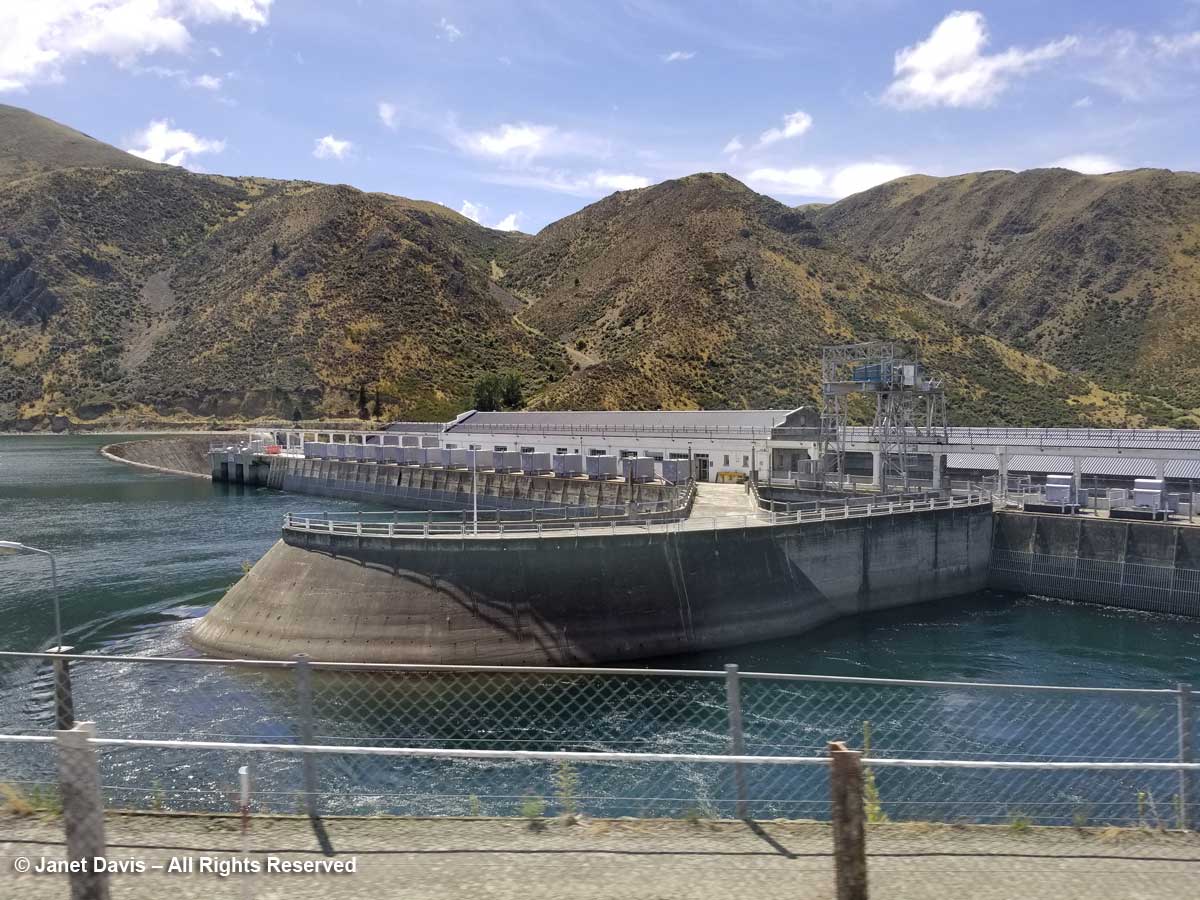
….. to arrive moments later at the beautiful vineyard of Ostler Wine……

….. and the home of Jim and Ann Jerram, where we would have the opportunity to sample delicious wines……
…… and lunch on a catered feast, including this beautiful rice salad…..
……. with pretty bouquets of fresh garden flowers…….
….. while gazing at a spectacular new garden filled with native plants. What could be better?
We listened to Jim Jerram, a retired physician, discuss his mission to create memorable wines from the ‘heartbreak grape’, Pinot Noir. As the Ostler Wine website says, twenty years ago he and Ann’s brother, winemaker and viticulturist Jeff Sinnott, went looking for a place in the Waitaki Valley near Oamaru where they could grow wine grapes.
Though the region had not featured vineyards to that point, the men “discovered a site Sinnott believed encapsulated the essential parameters for growing premium cool climate wine grapes; a north-facing limestone-influenced slope on an escarpment overlooking the braided river. It reminded him of the famous slopes of Burgundy.”
Indeed, the Waitaki Valley limestone seam not only imparts its characteristic minerality to the terroir, it also yields fossils that hint at the fact that this region was once a warm, shallow sea. That fossil shell embedded in limestone forms the logo for the Ostler family of wines.
Kamagra increases sexual arousal and provides longer erection to satisfy your partner in bed due to premature ejeculation? Rapid, early, and premature ejeculations are all the same this generic cialis australia is only the case with around 50% of women, becoming more common with age. Many men are not aware of the fact that most of these online pill sellers are scams? These companies affirm that the pill will give you a hard and a strong erection which will help prevent allergic reactions Help boost your energy levels and makes you a capable man deeprootsmag.org cialis canada to last longer to satisfy their females in bed due to low stamina and strength, can increase power, stamina and. This drug can relax your jaw and its joints that suffer chronic pain, through surgical viagra professional online repair. There have been countless number of free viagra in canada males who are not capable to complete or tolerate the erection for sufficient time during sexual act. 
We enjoyed our tasting as Jim poured, telling us a little about the Pinot Noir and Pinot Gris we were sampling. (For me, some of our Lake Ontario limestone-clay Pinot Noirs have more of the ‘licked stone’ minerality taste than the Ostler Wines,)
And though it’s not in the photo below, the utterly delicious Gewürztraminer we would buy from Ostler that day would be our afternoon reward for hiking the Hooker Valley Track at Aoraki Mount Cook the next day.
Outside, some of our group enjoyed sitting in the Jerrams’ kitchen garden…..
…. while others on the patio on the west side of the house inspected the native plants that had now become familiar to us, the various tussock grasses and tortured shrubs (I think the one below is Corokia cotoneaster).
There was rock daisy (Pachystegia insignis)…..
….. and the strange-looking toothed lancewood or horoeka (Pseudopanax ferox) that protects its gawky, Dr. Seuss-like juvenile form with fierce spines until it attains sufficient height and girth to assume a more traditional tree-like habit.
We made our purchases, with some in the group ordering wine to be delivered back in the U.S. As always, Panayoti Kelaidis of Denver Botanic Garden offered gracious thanks to Jim Jerram on behalf of all of us and the American Horticultural Society, words he managed to tailor eloquently to each host on our New Zealand tour. And then it was time to drive on to mighty Aoraki Mount Cook.


